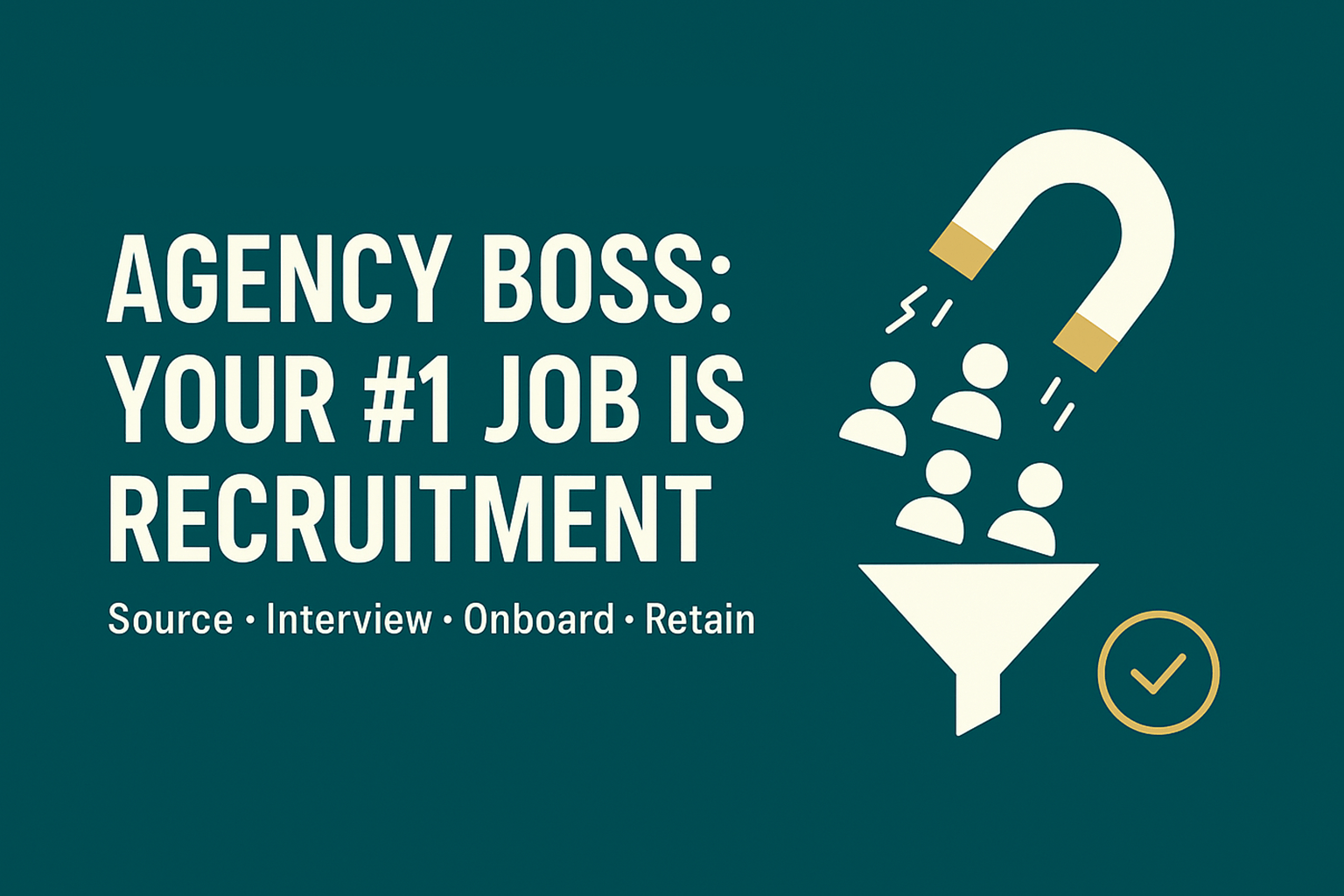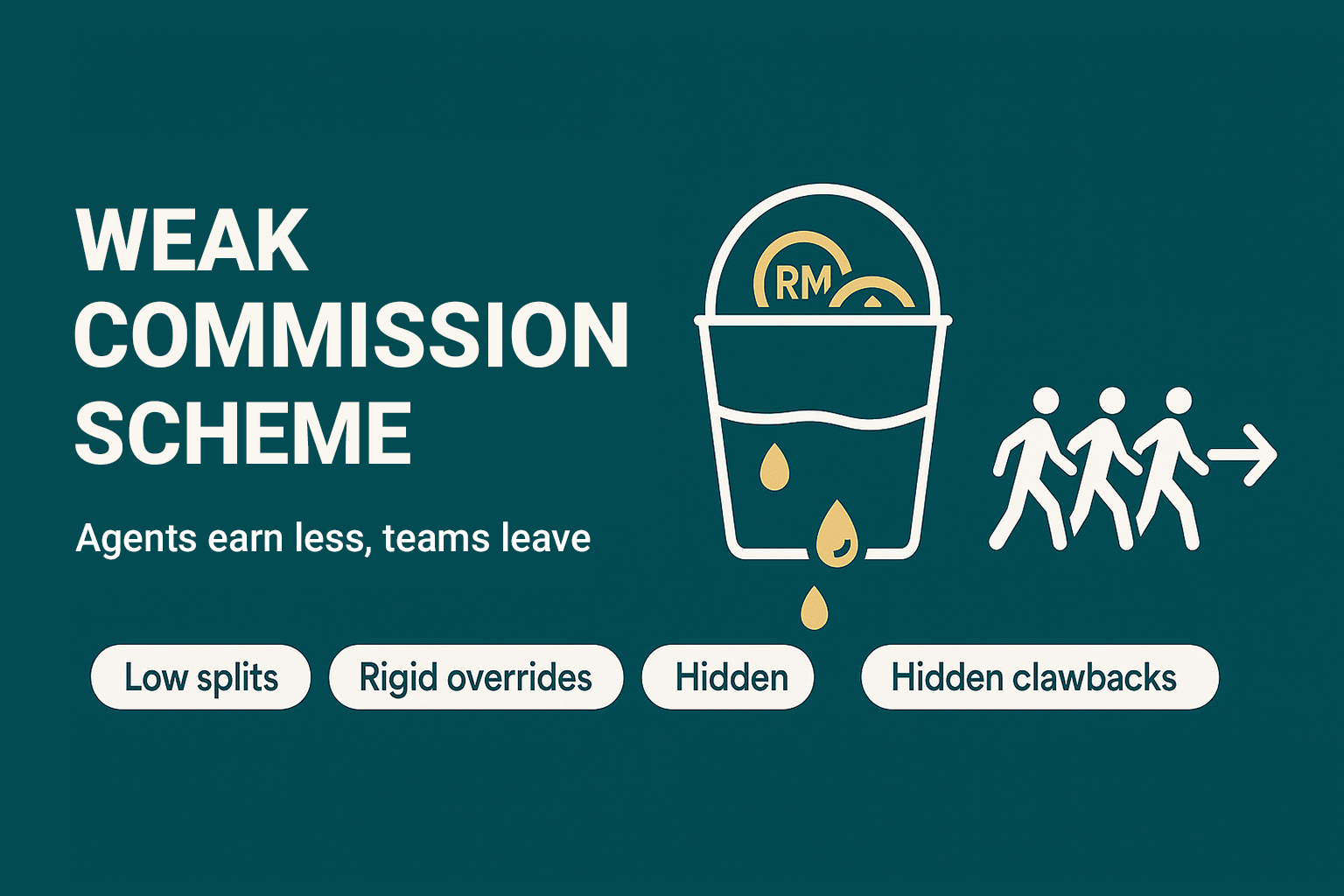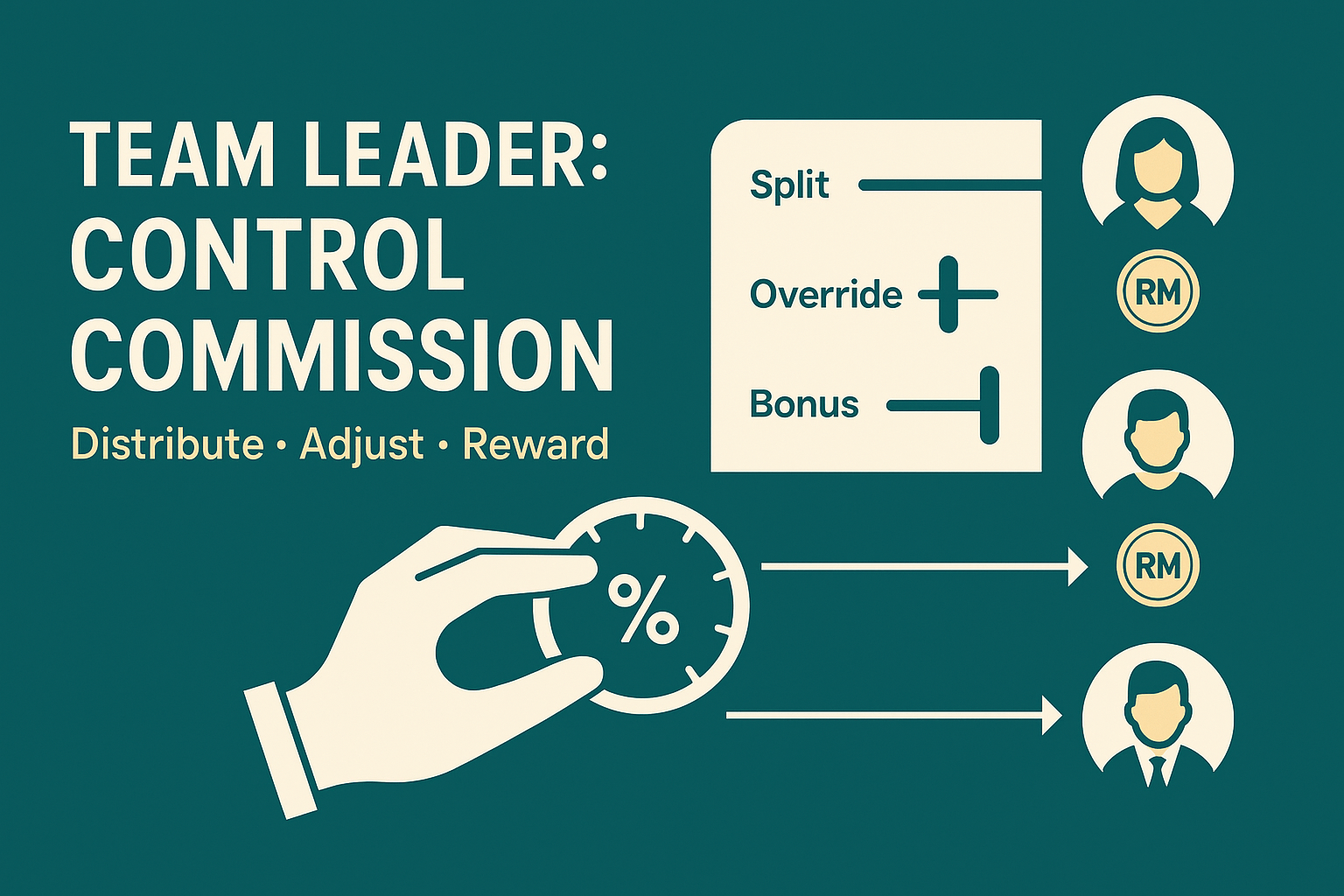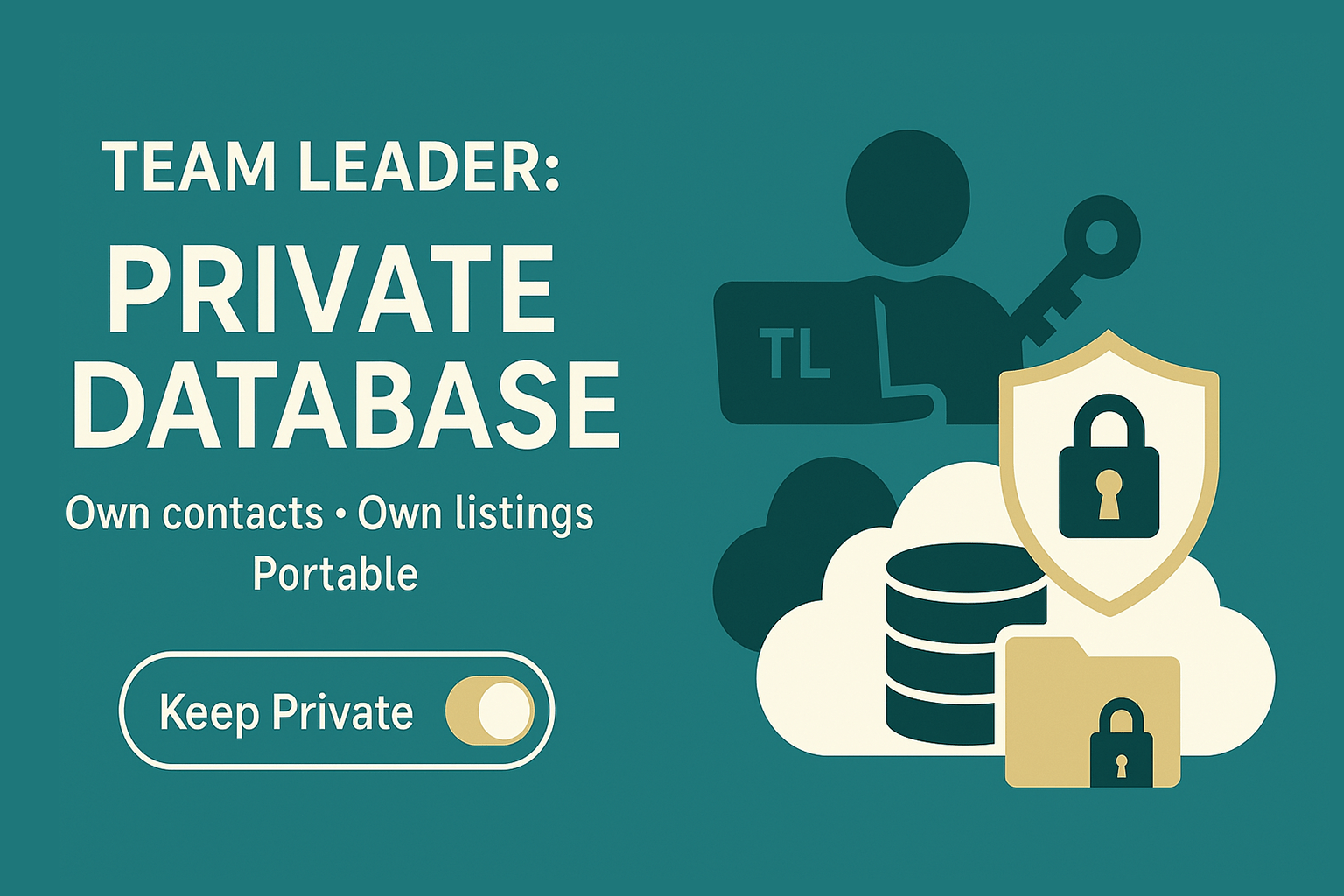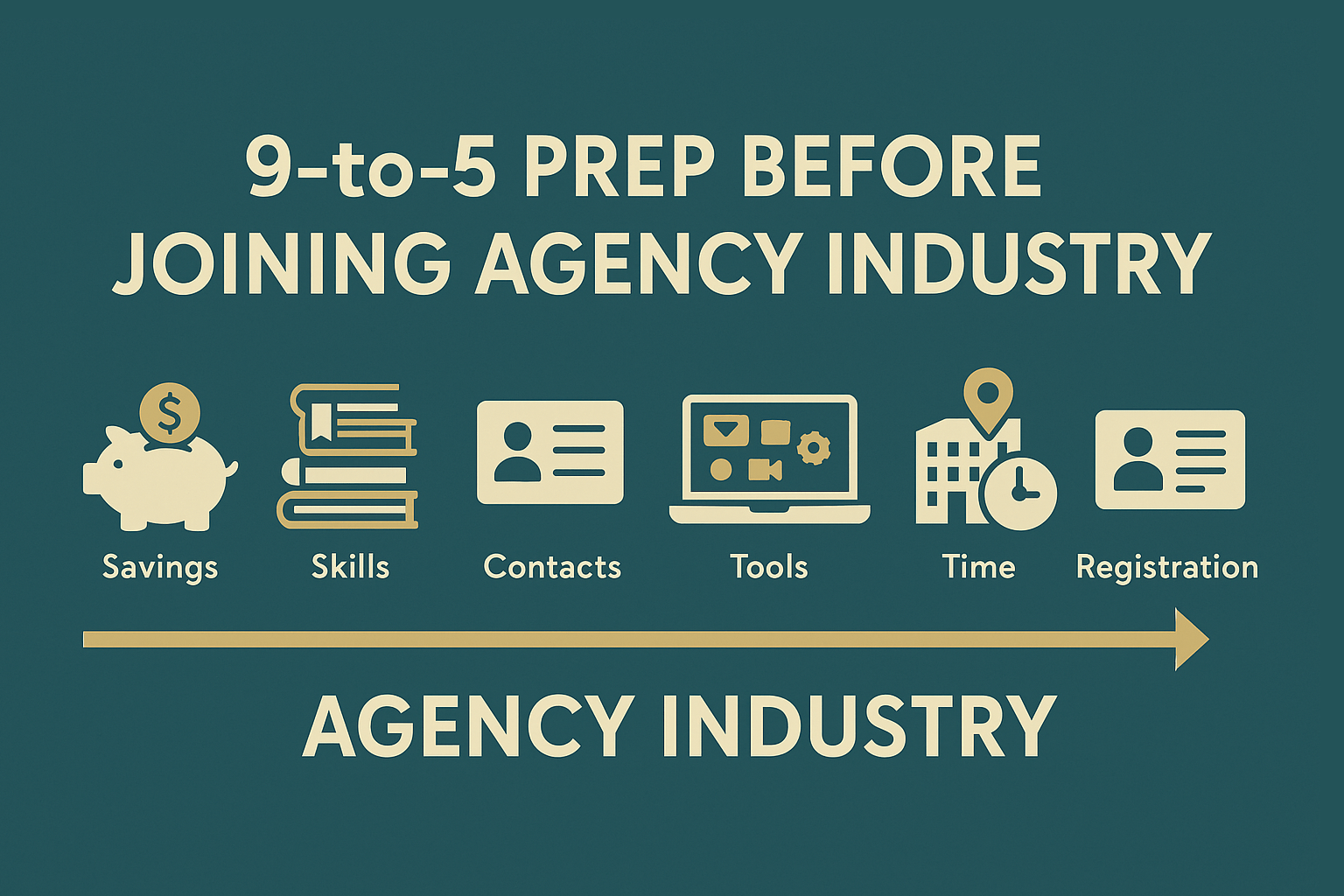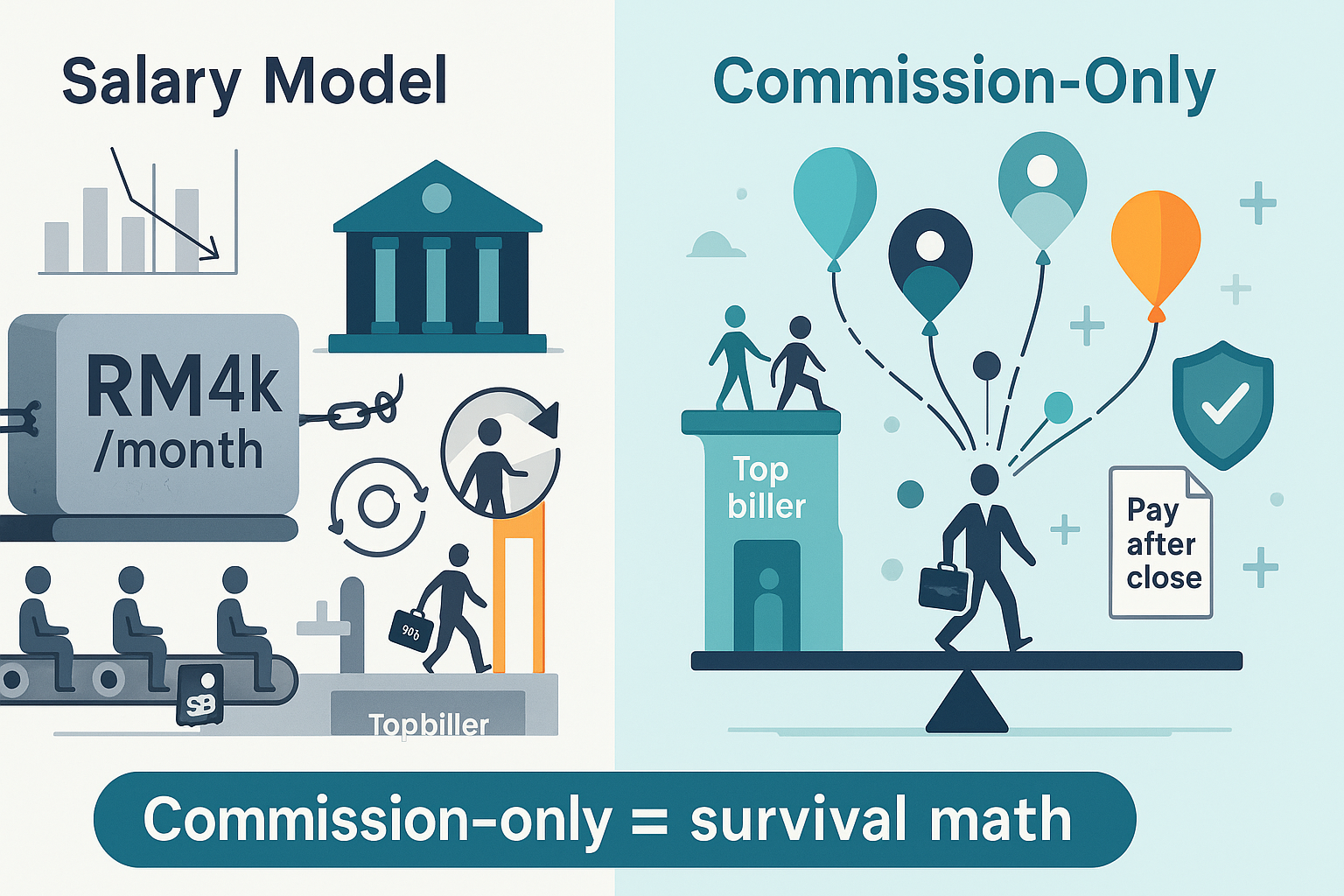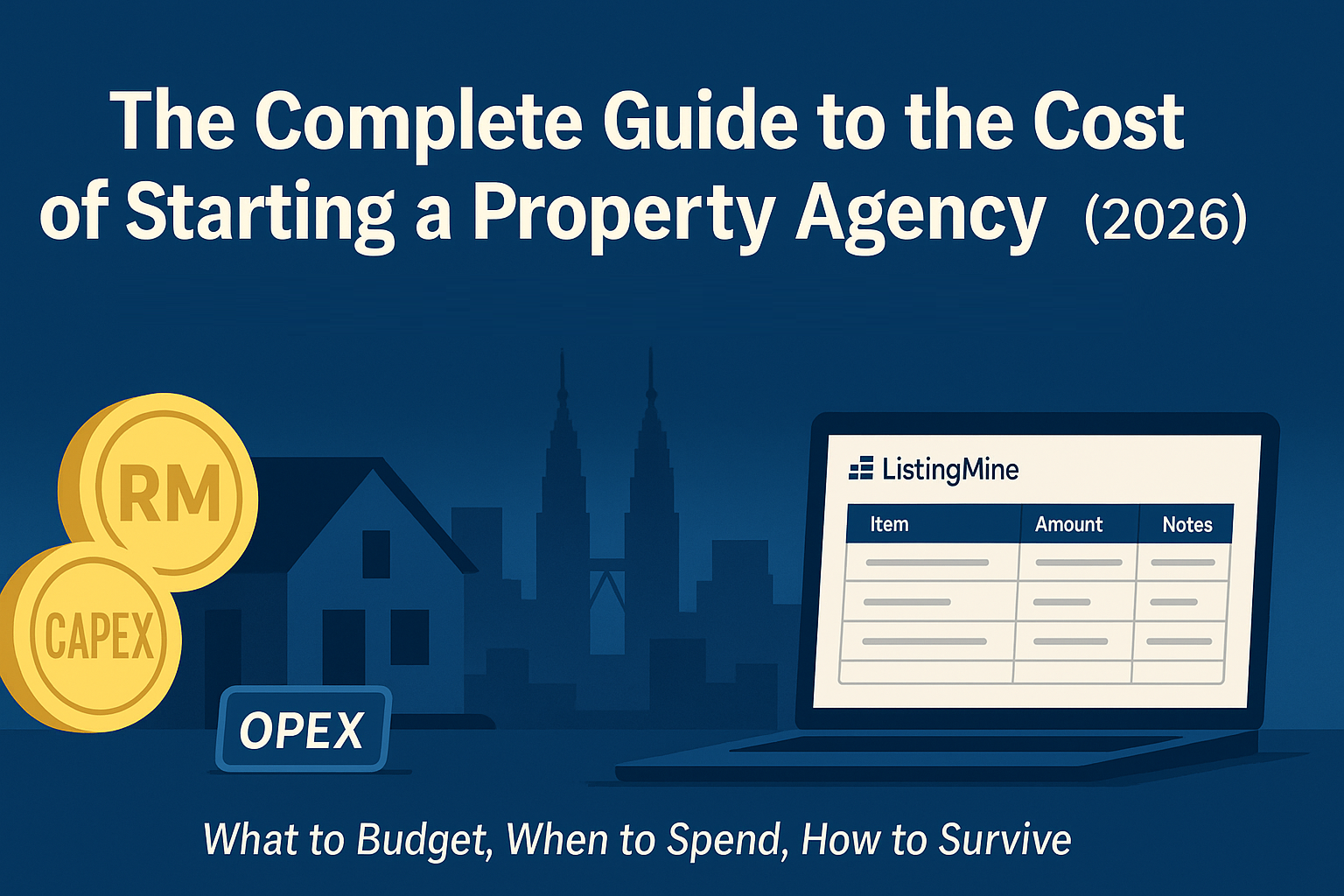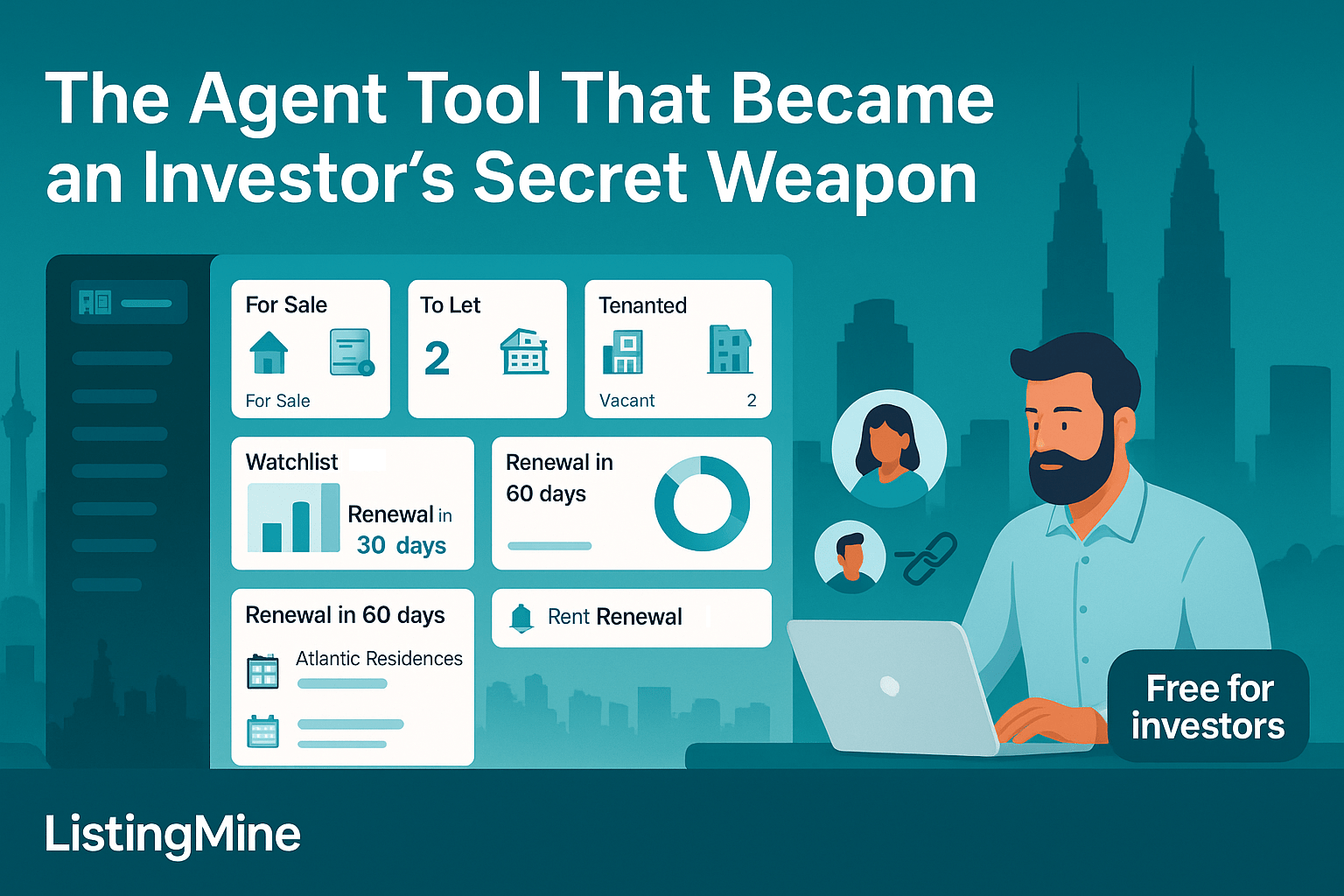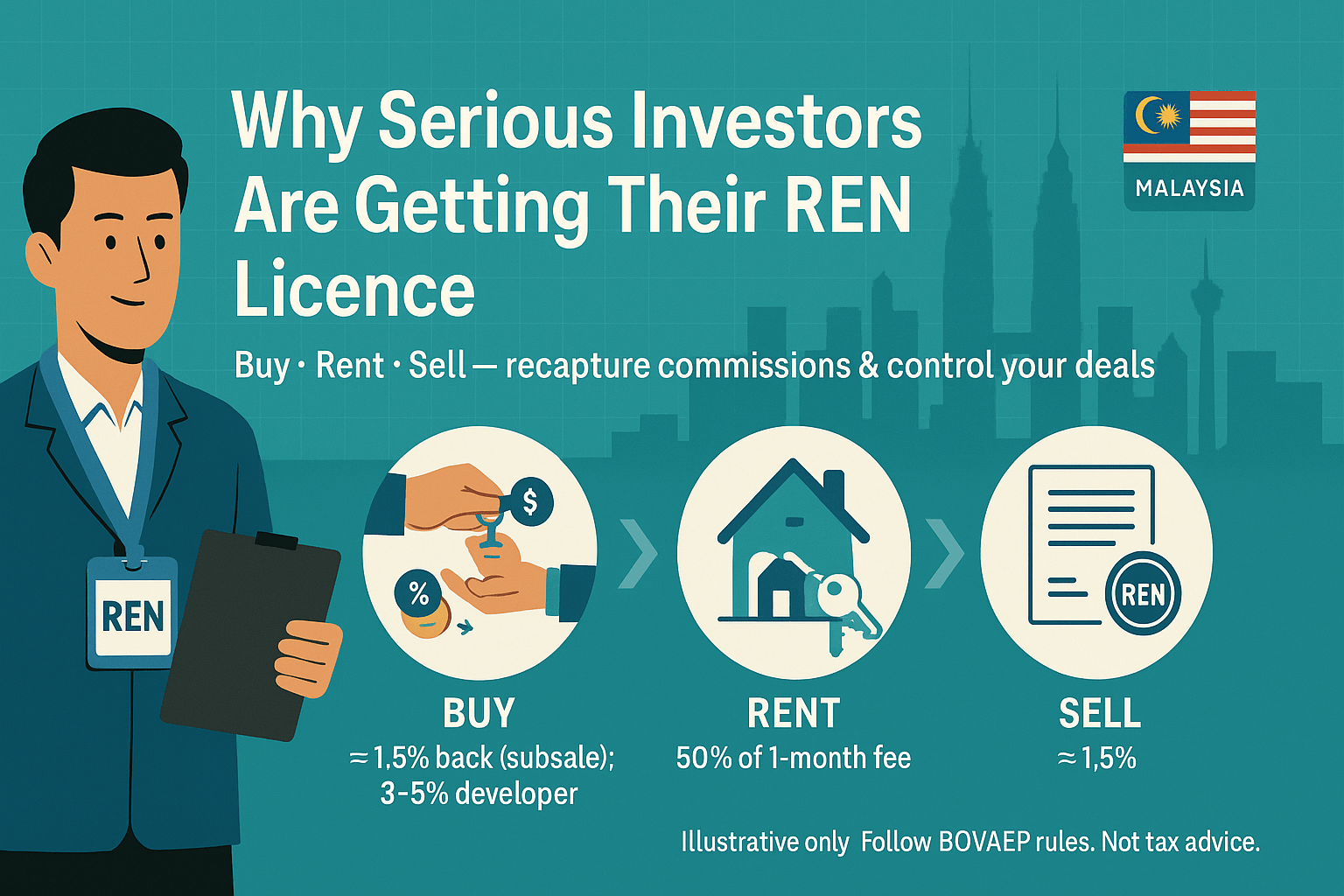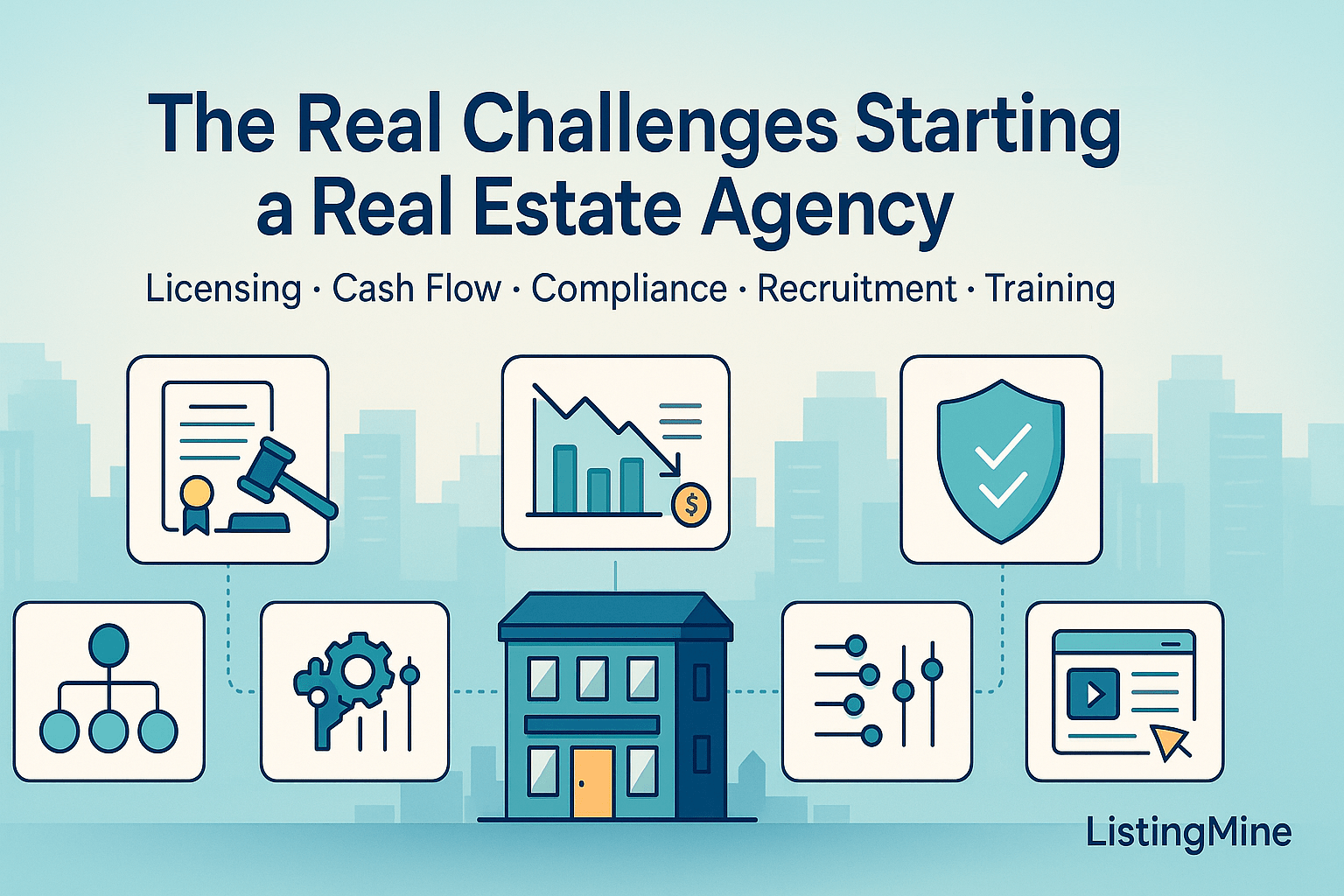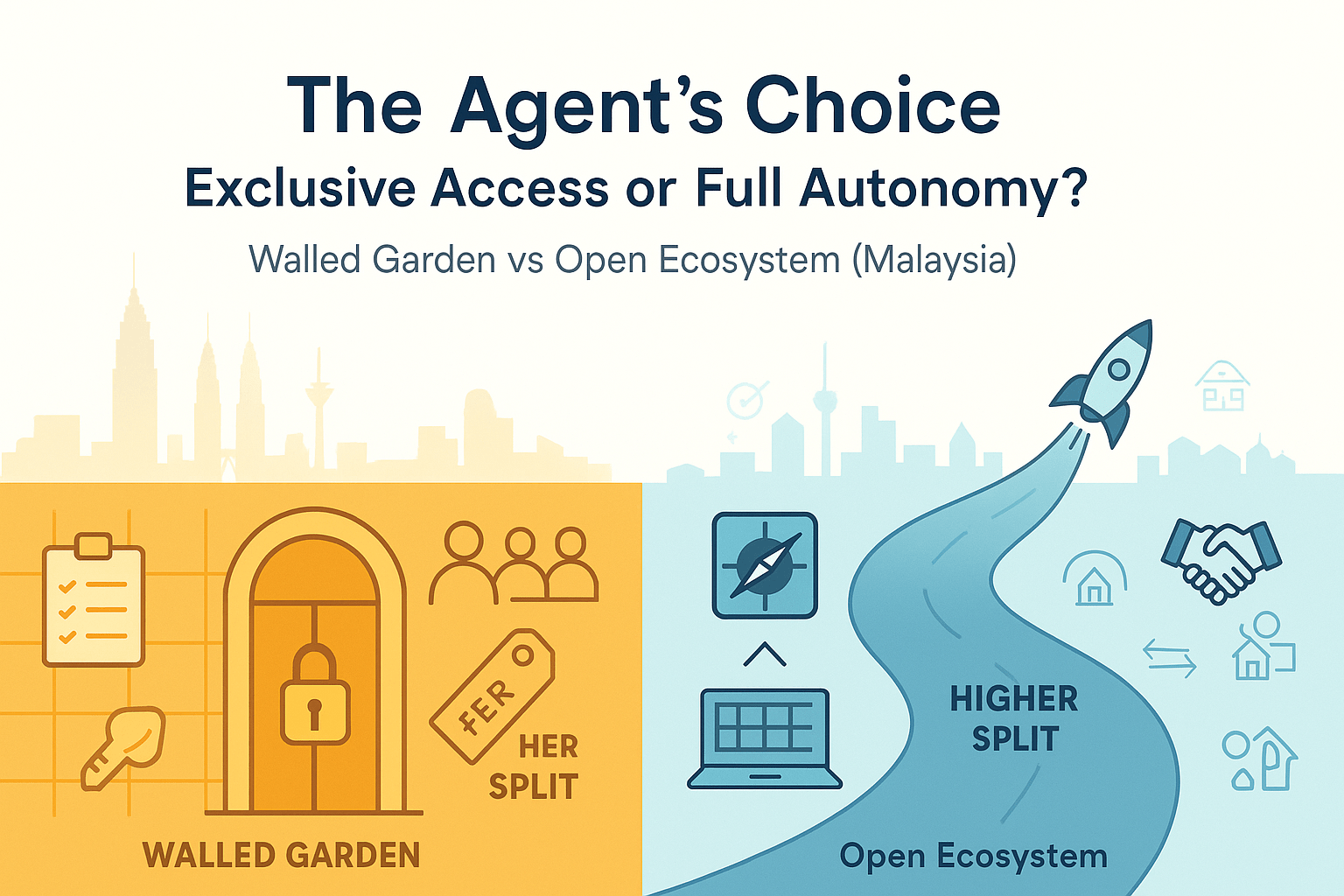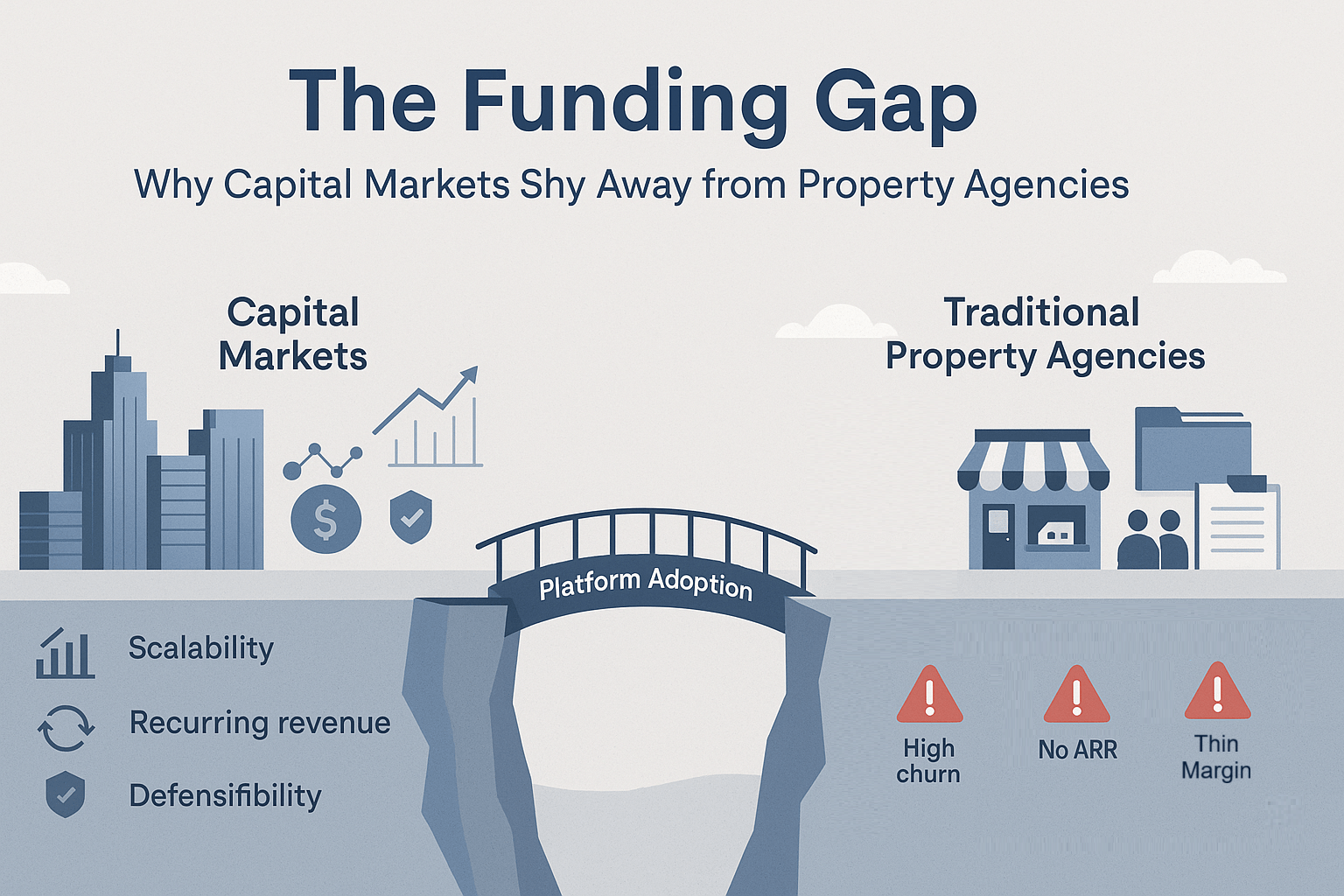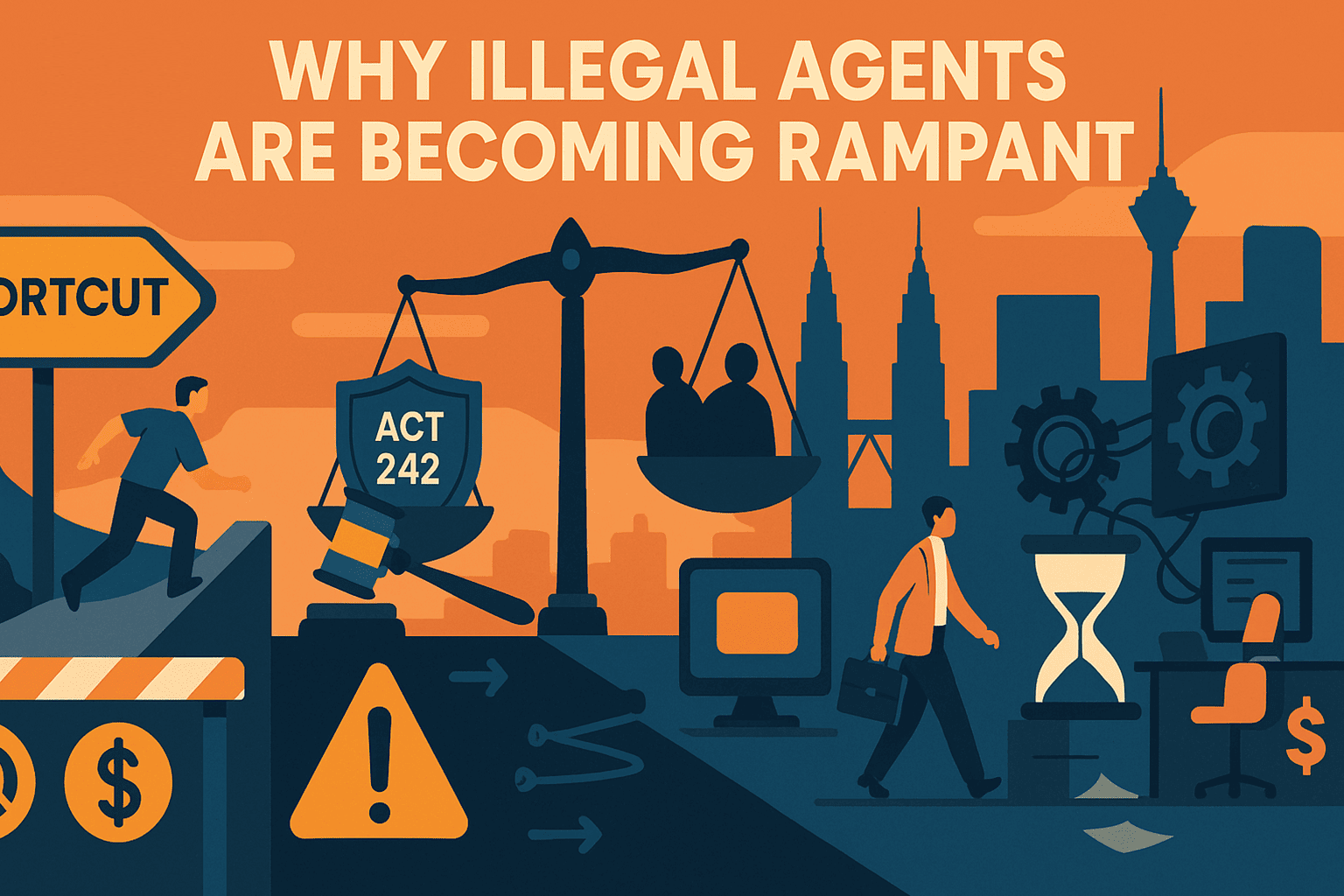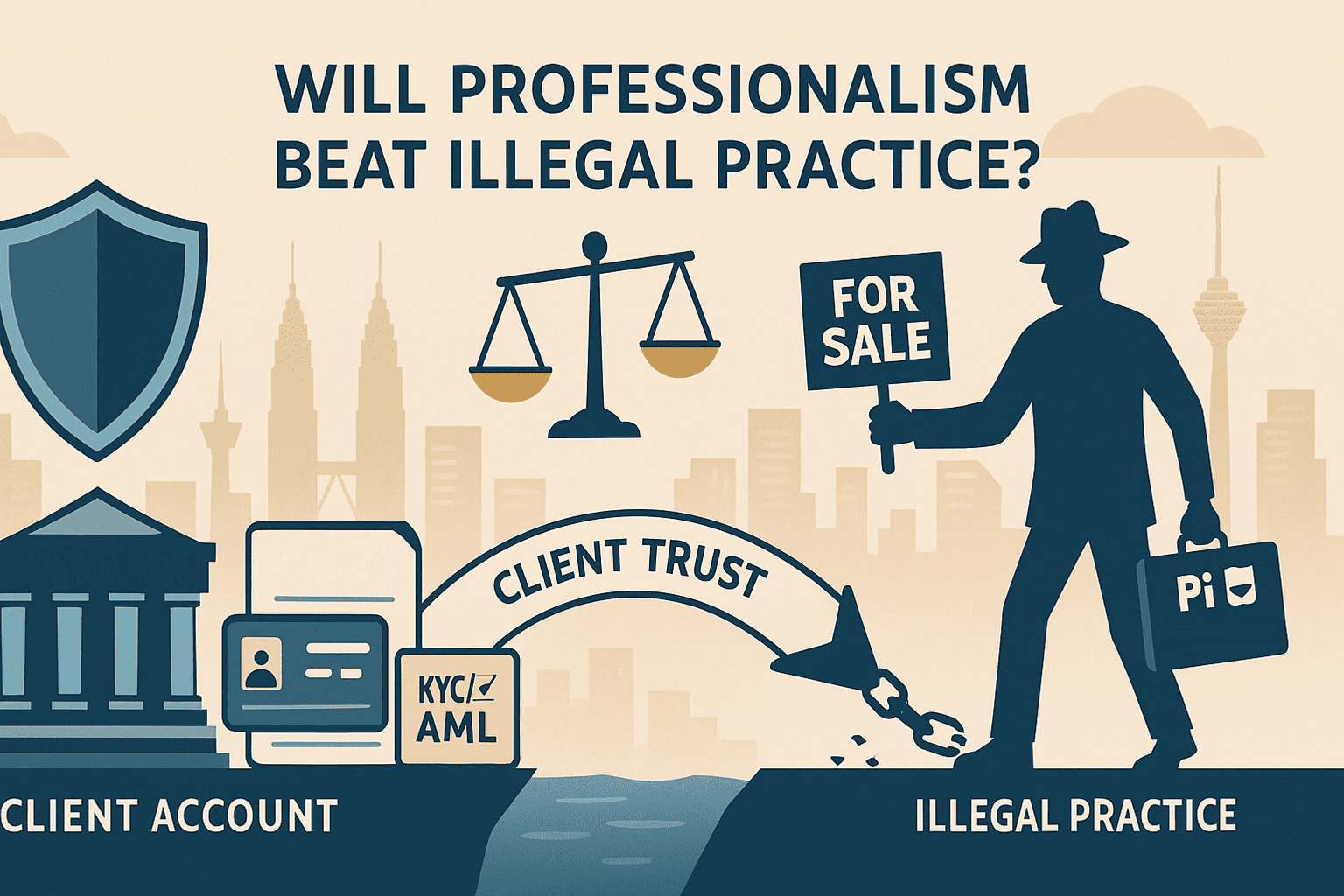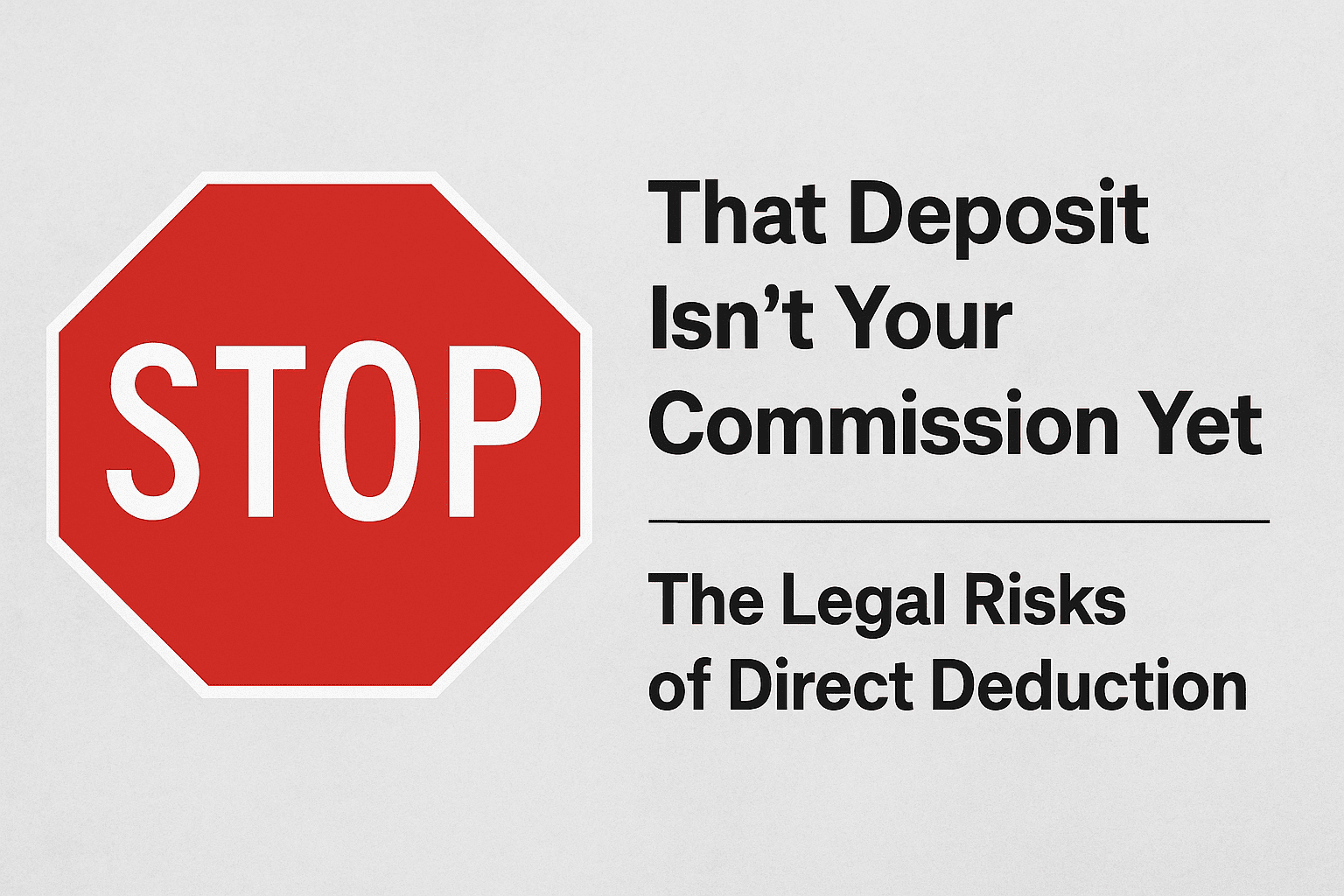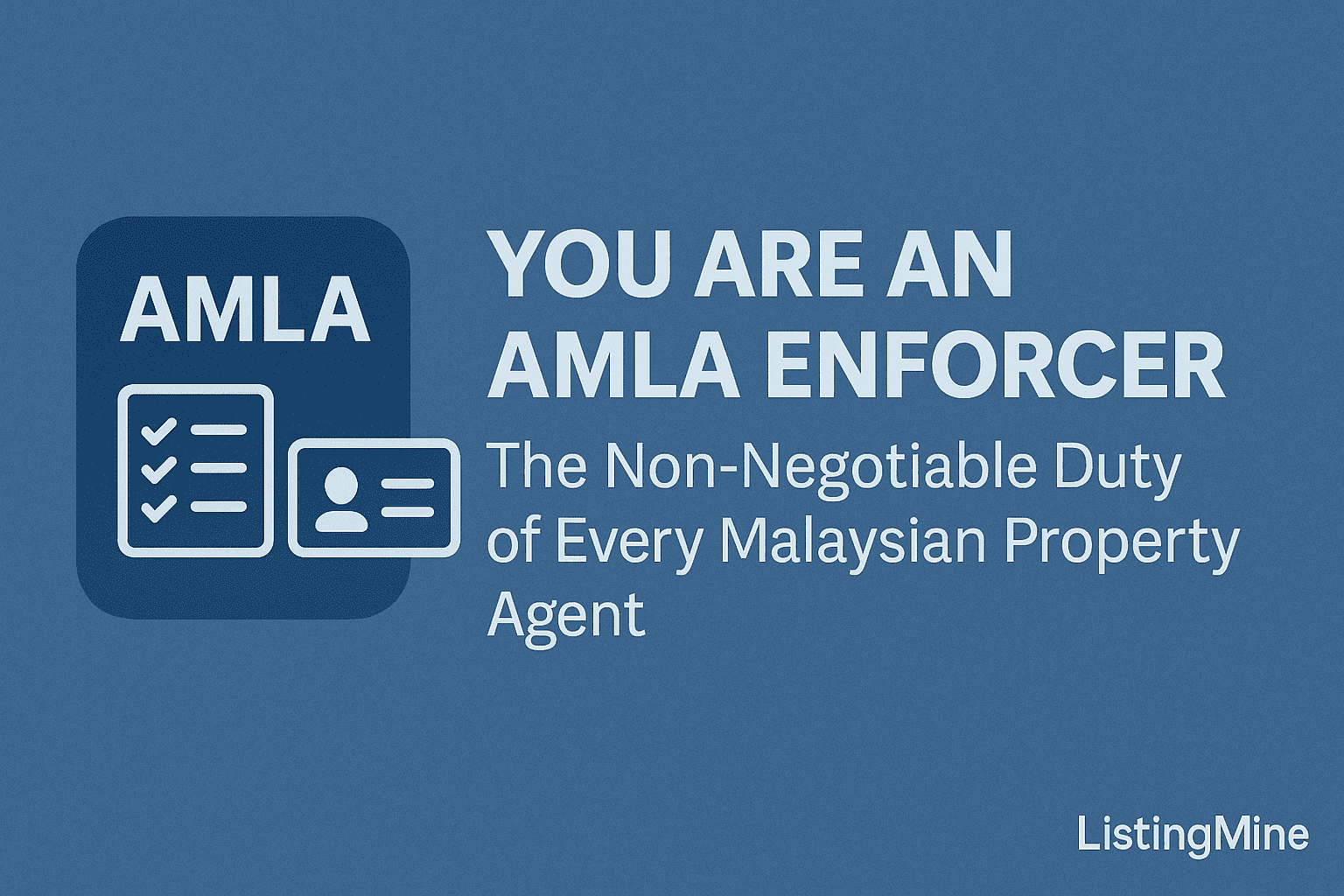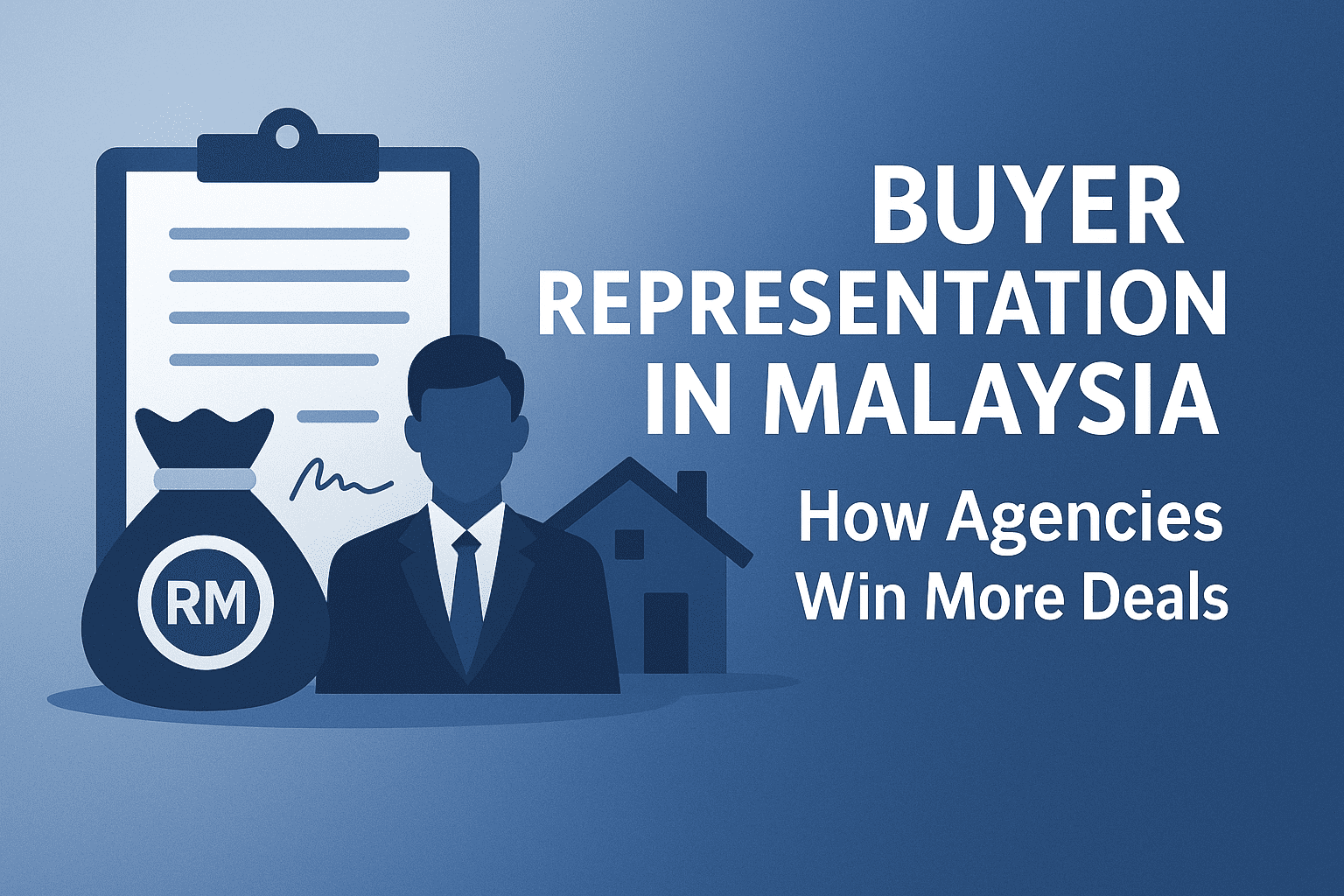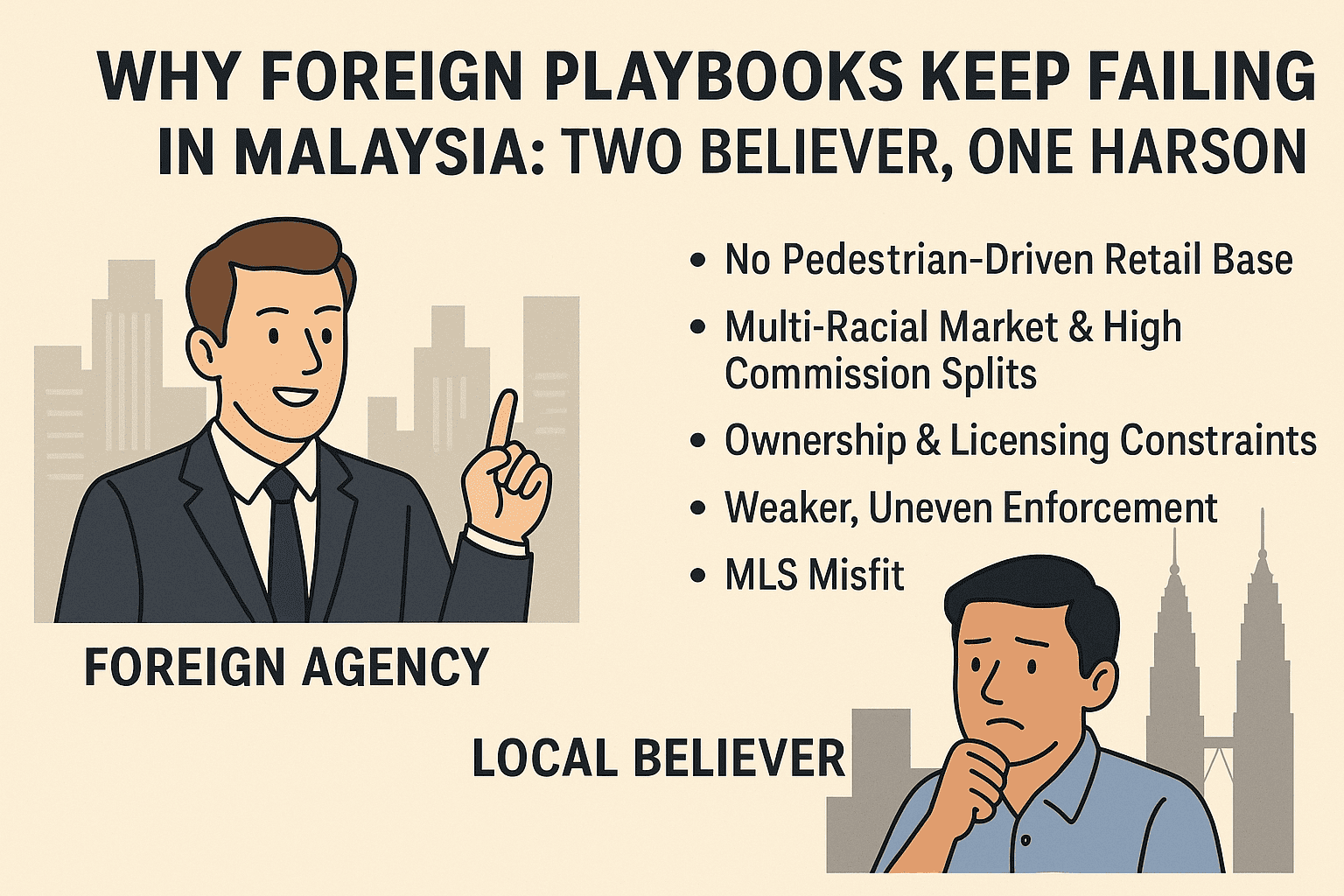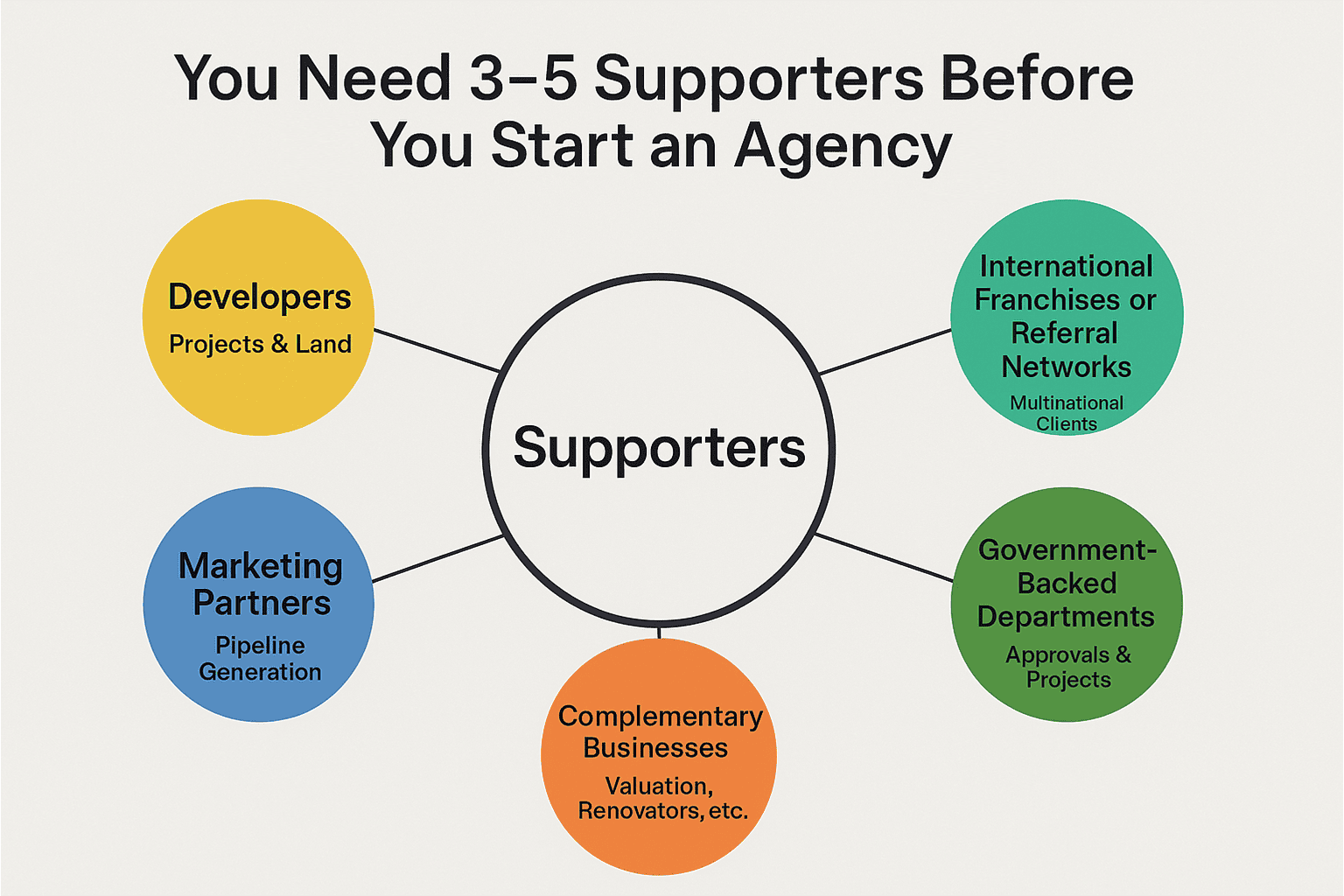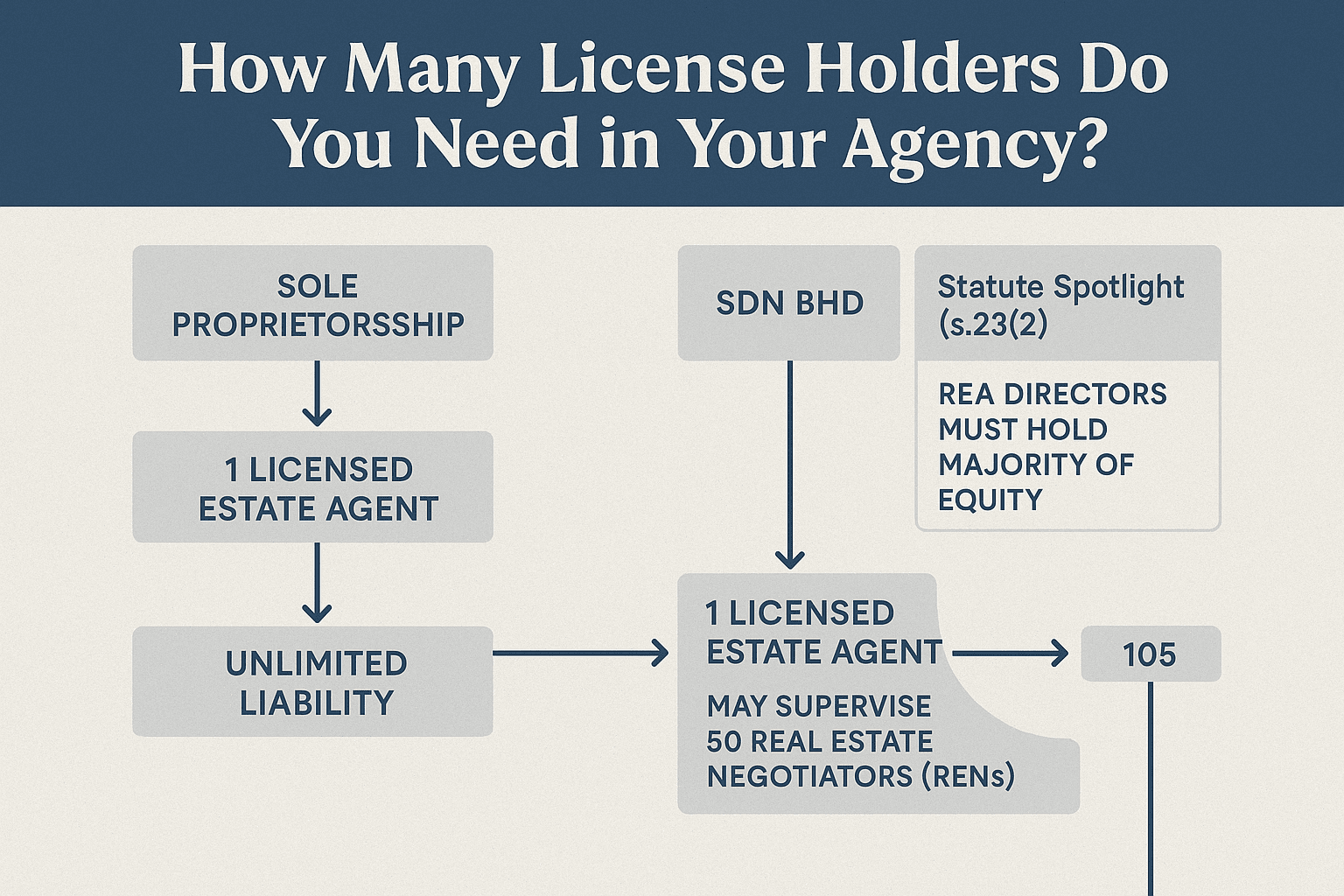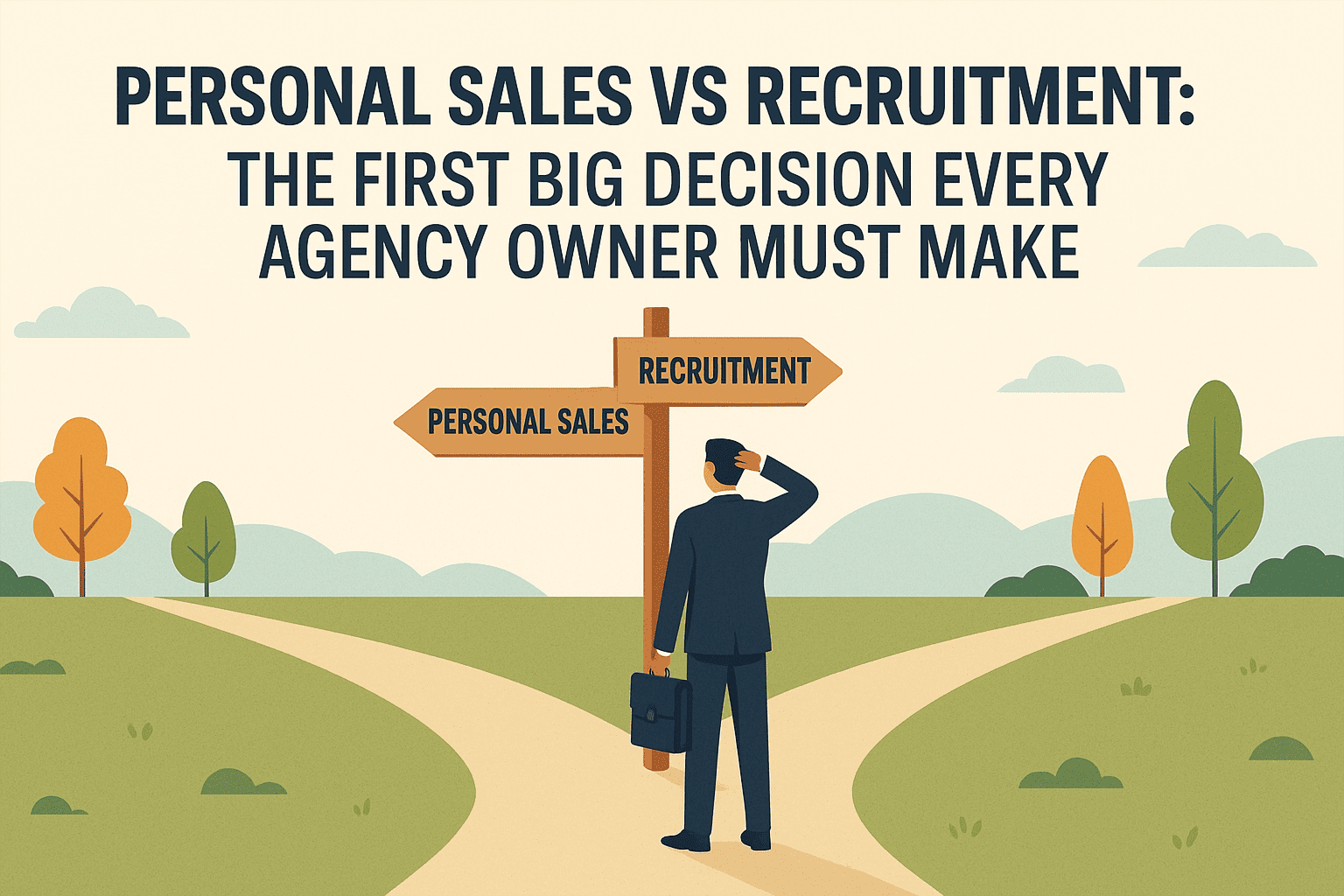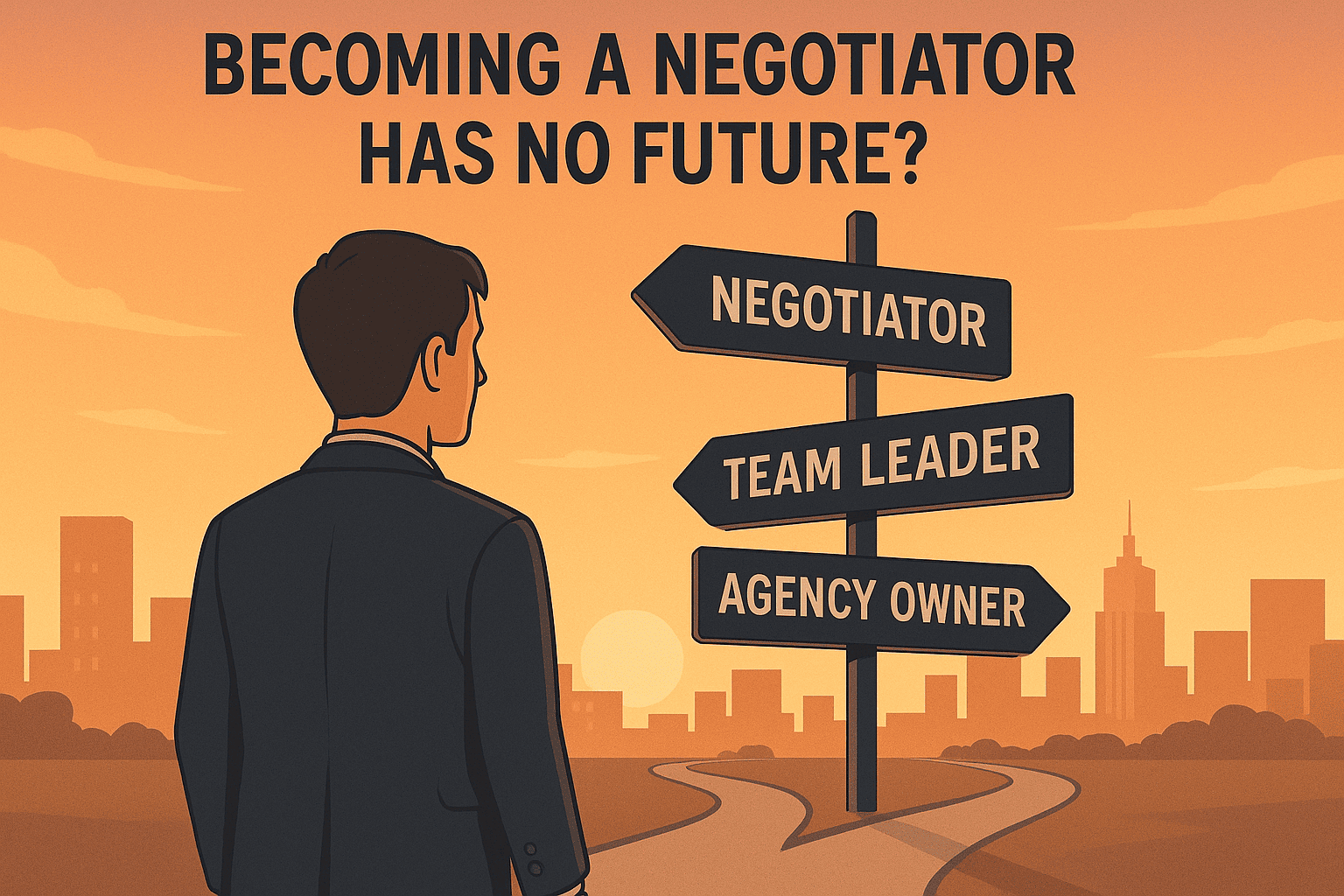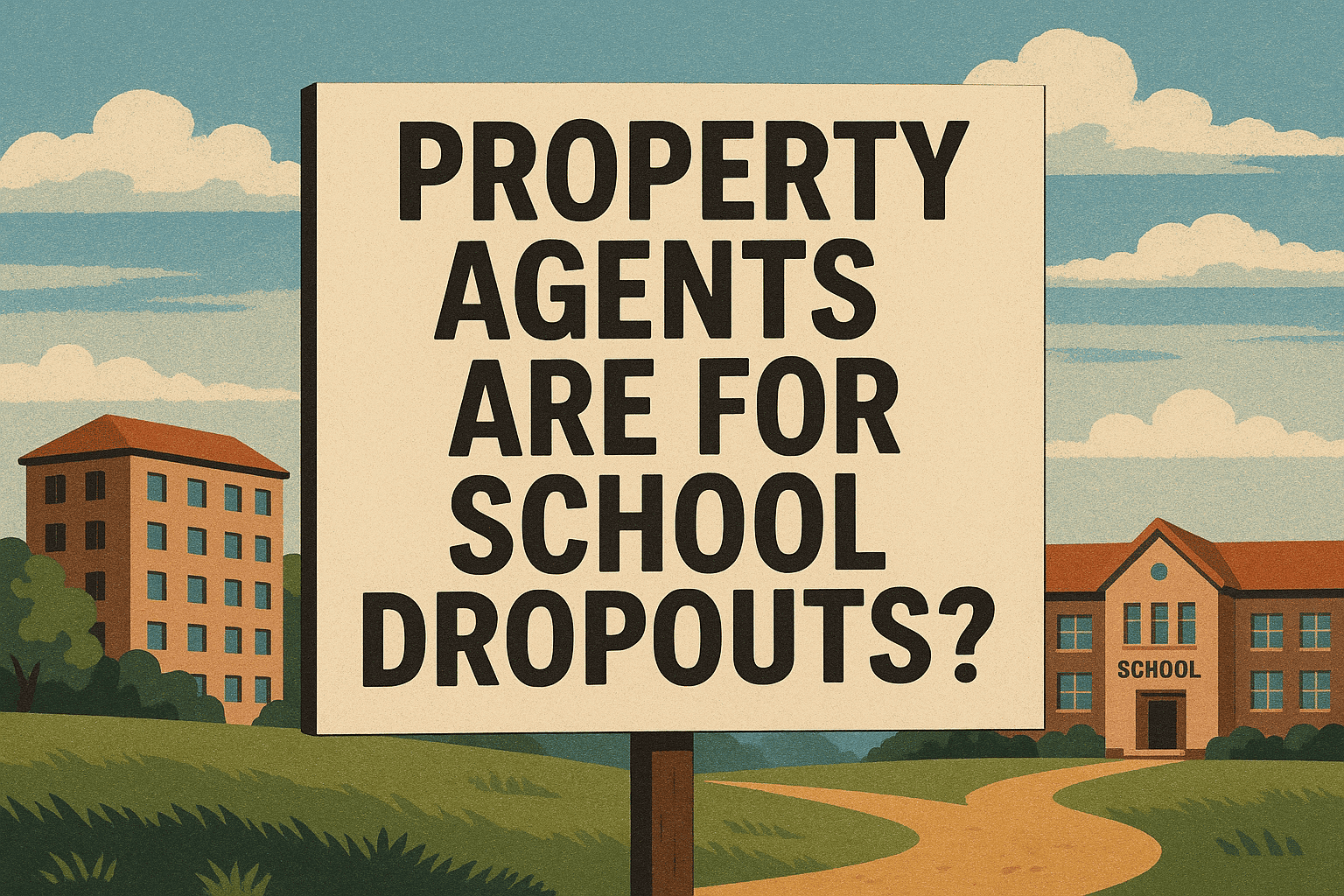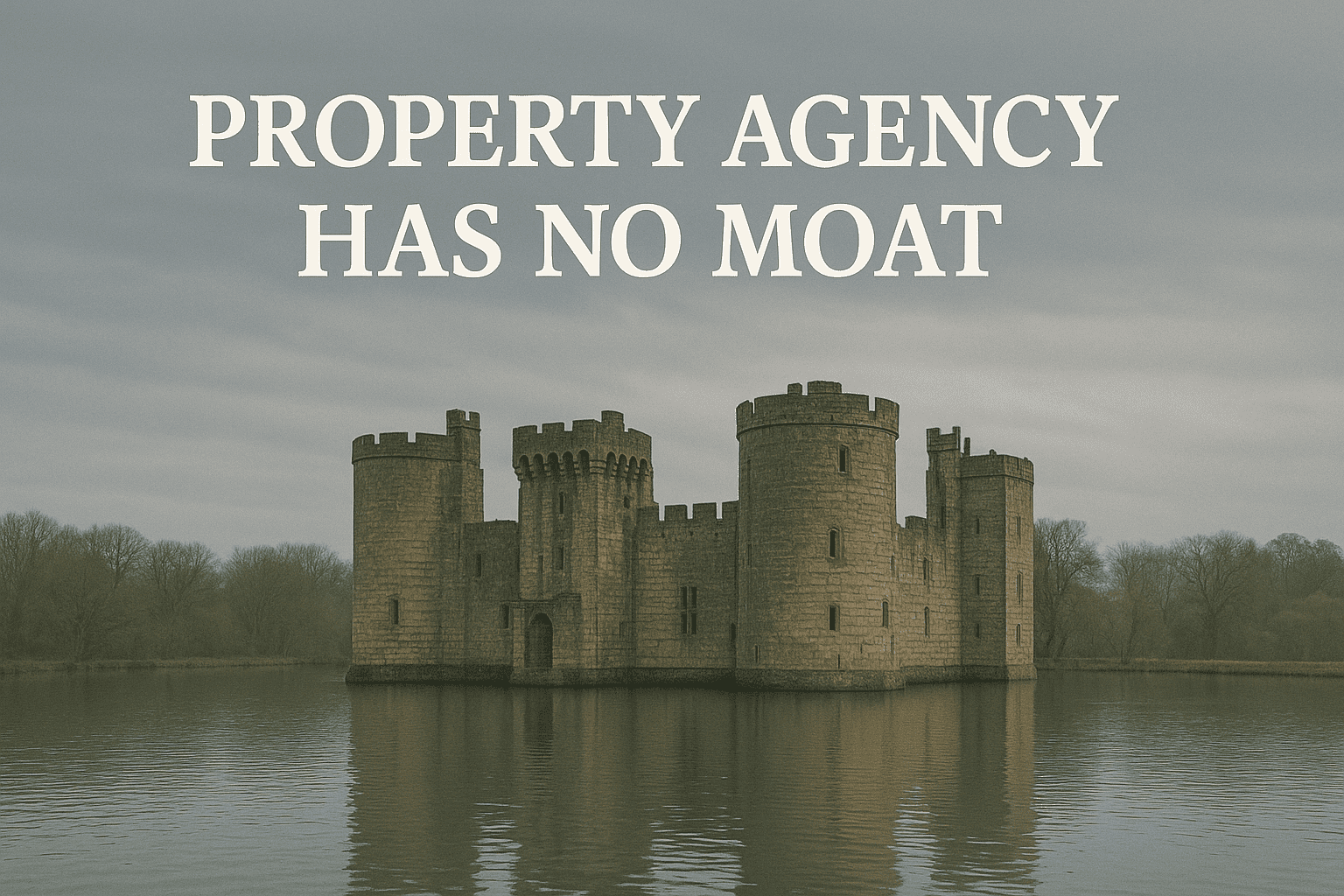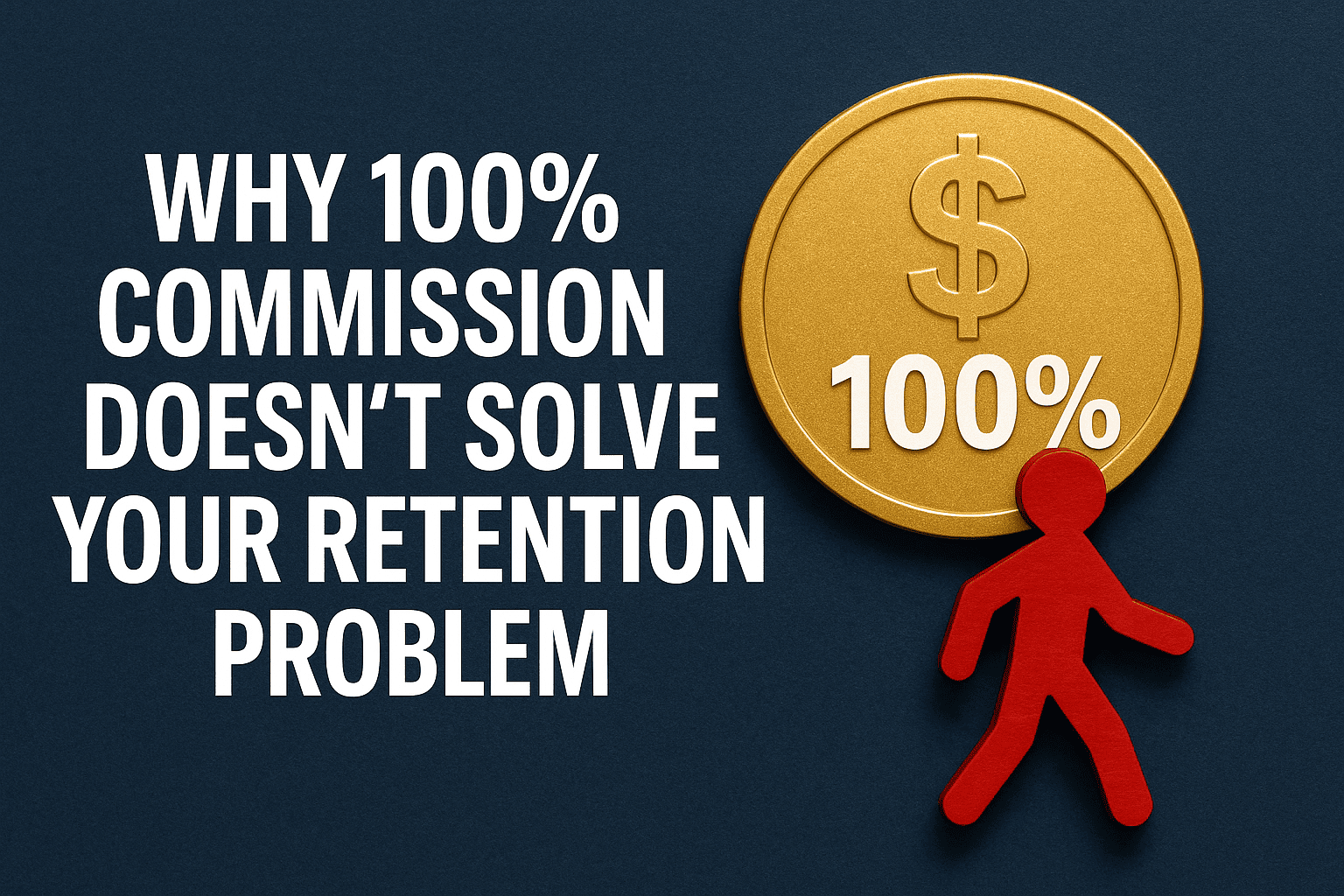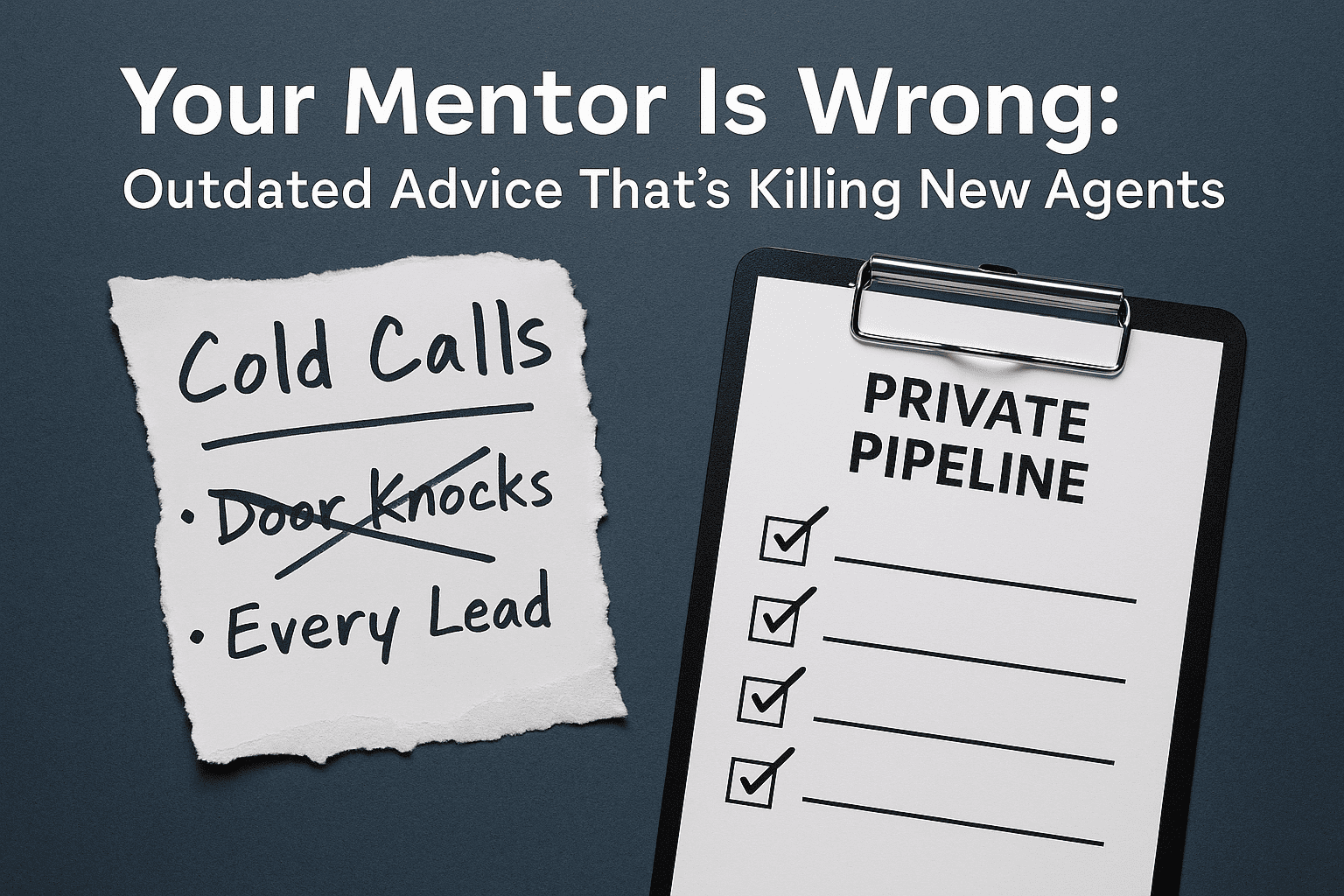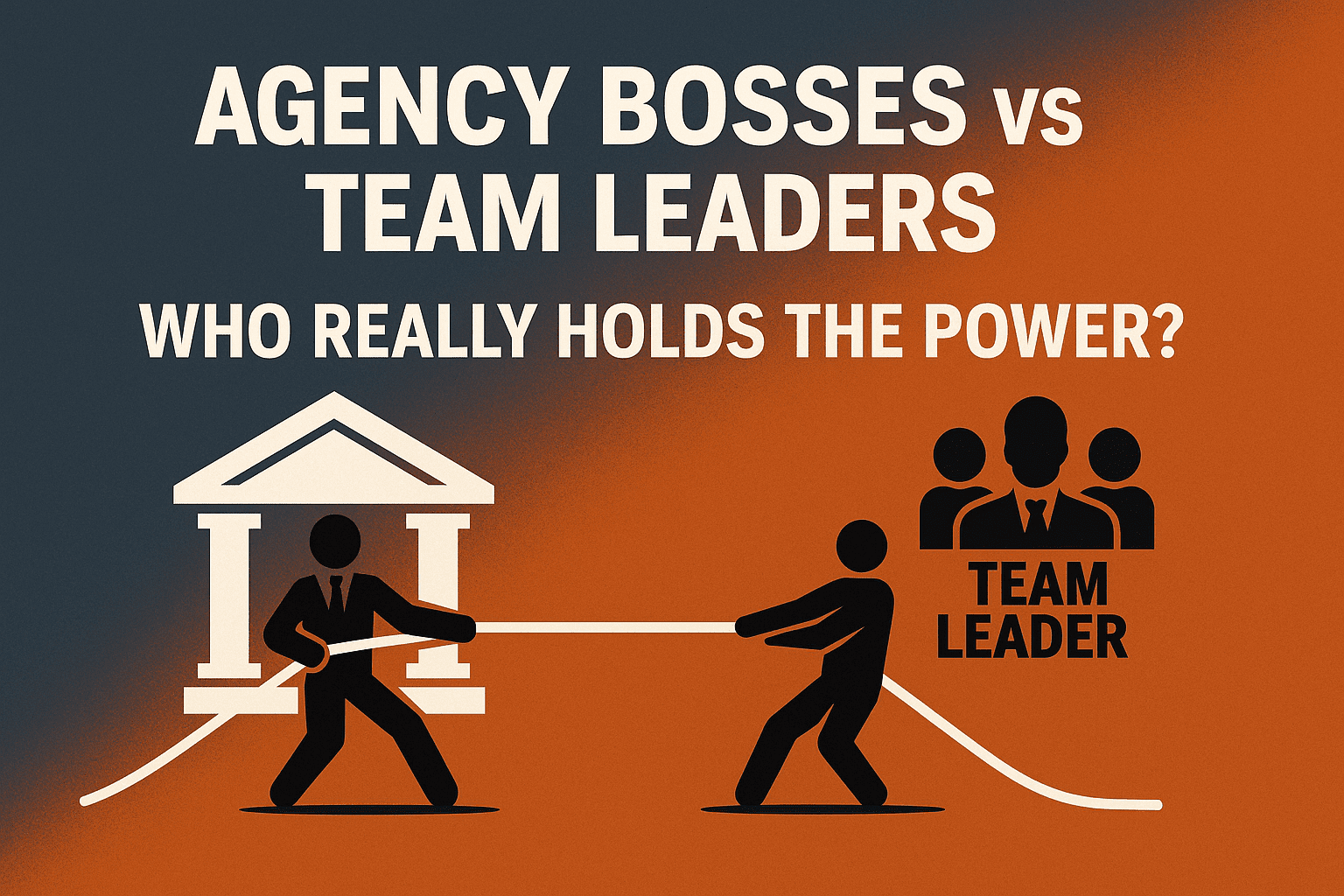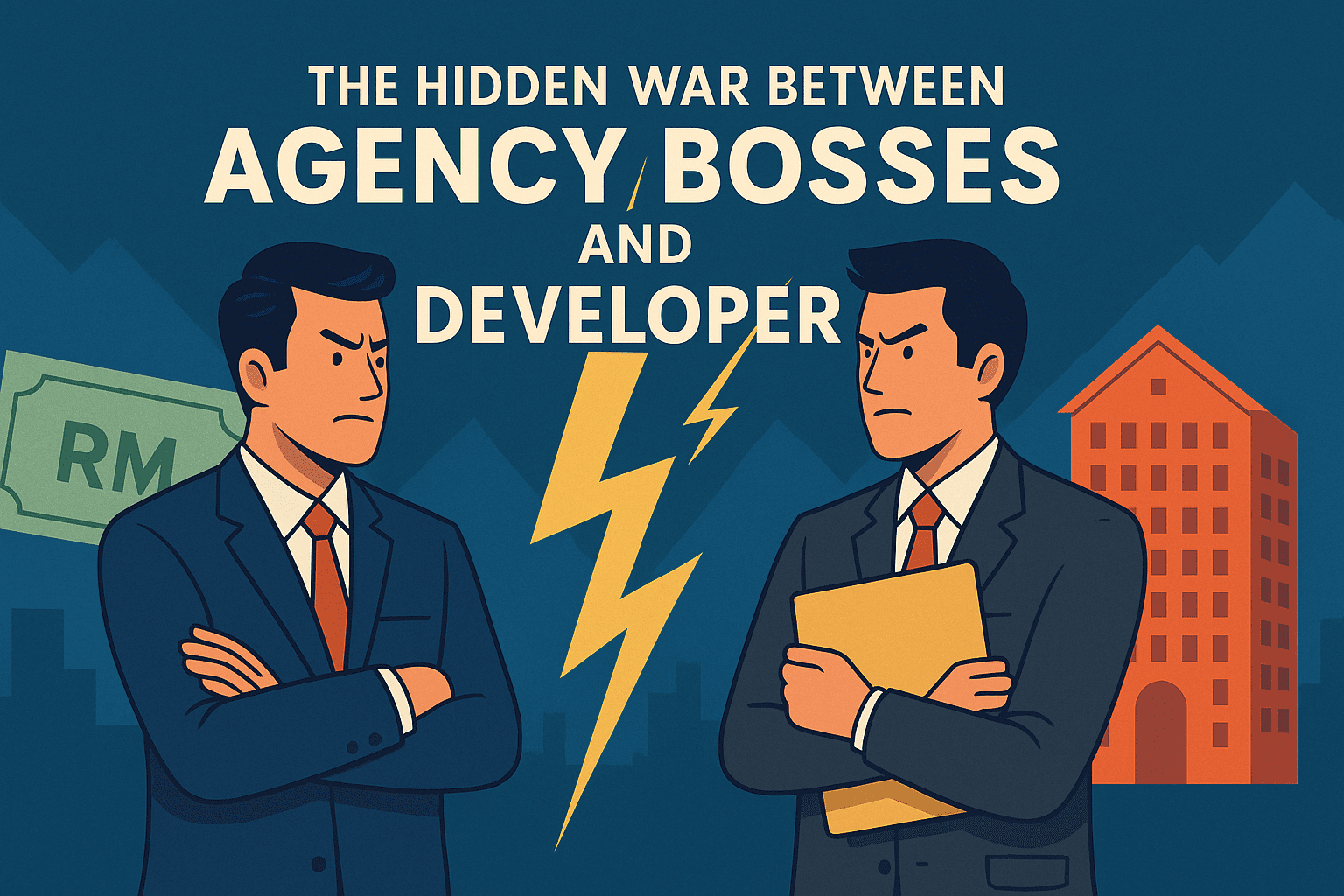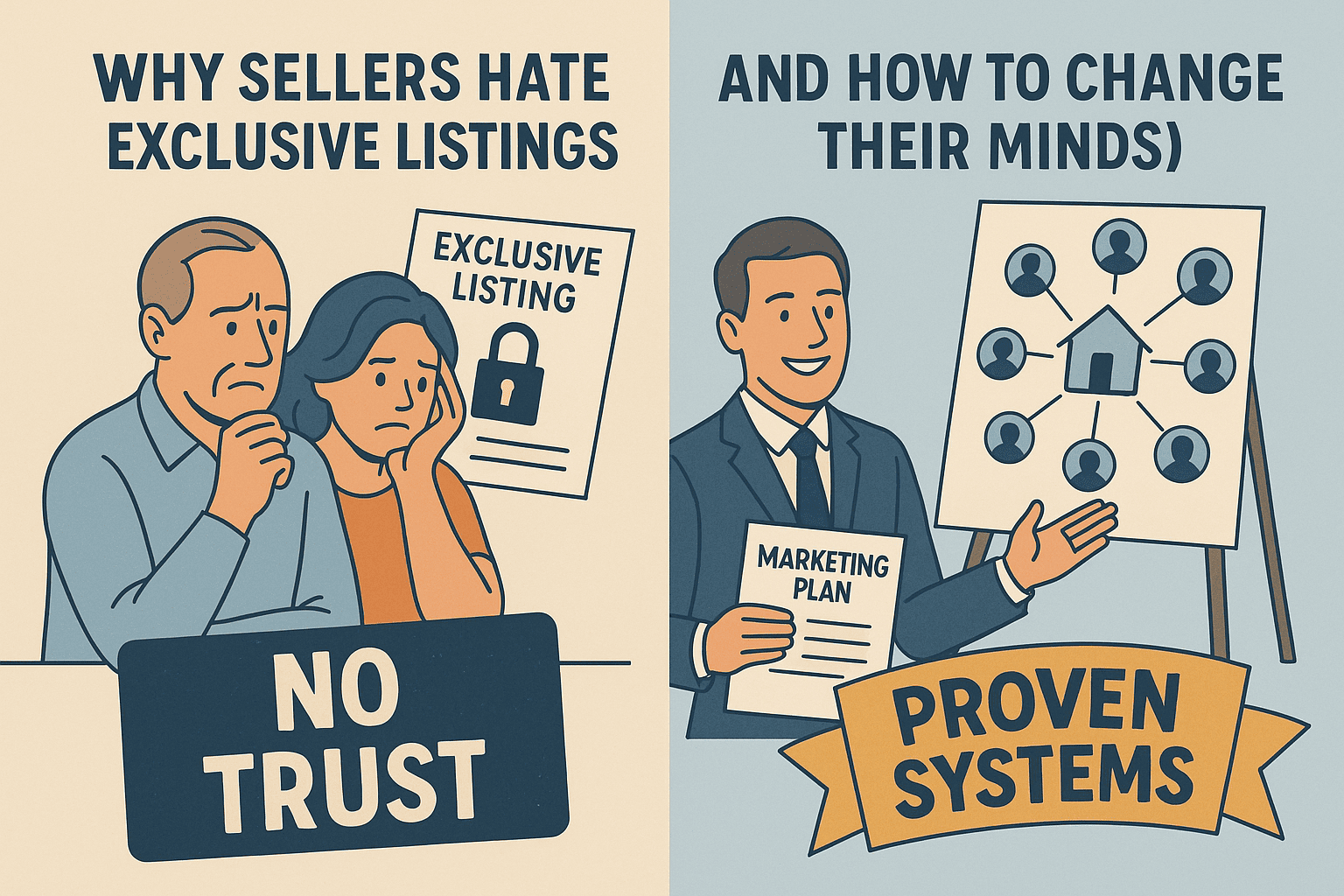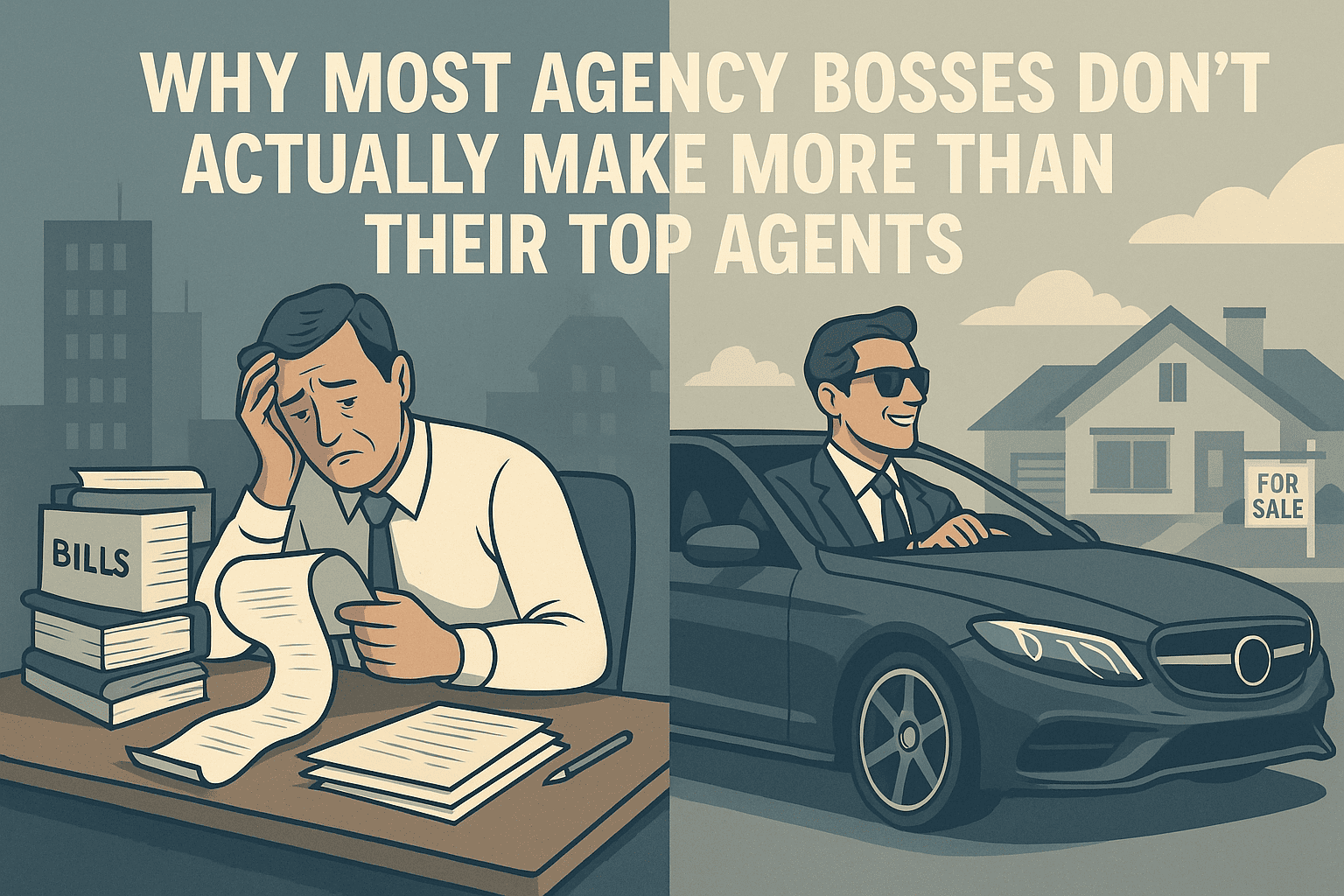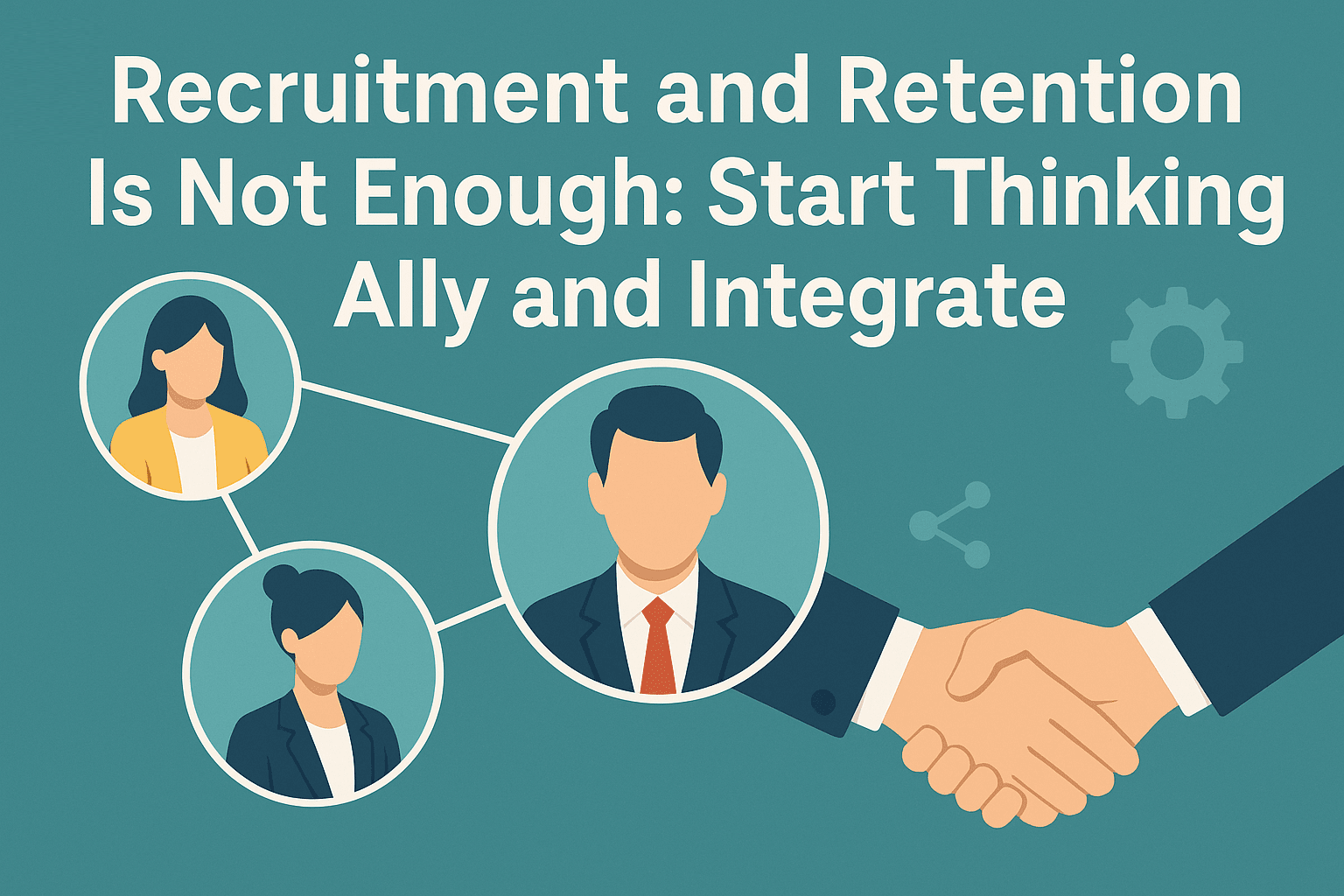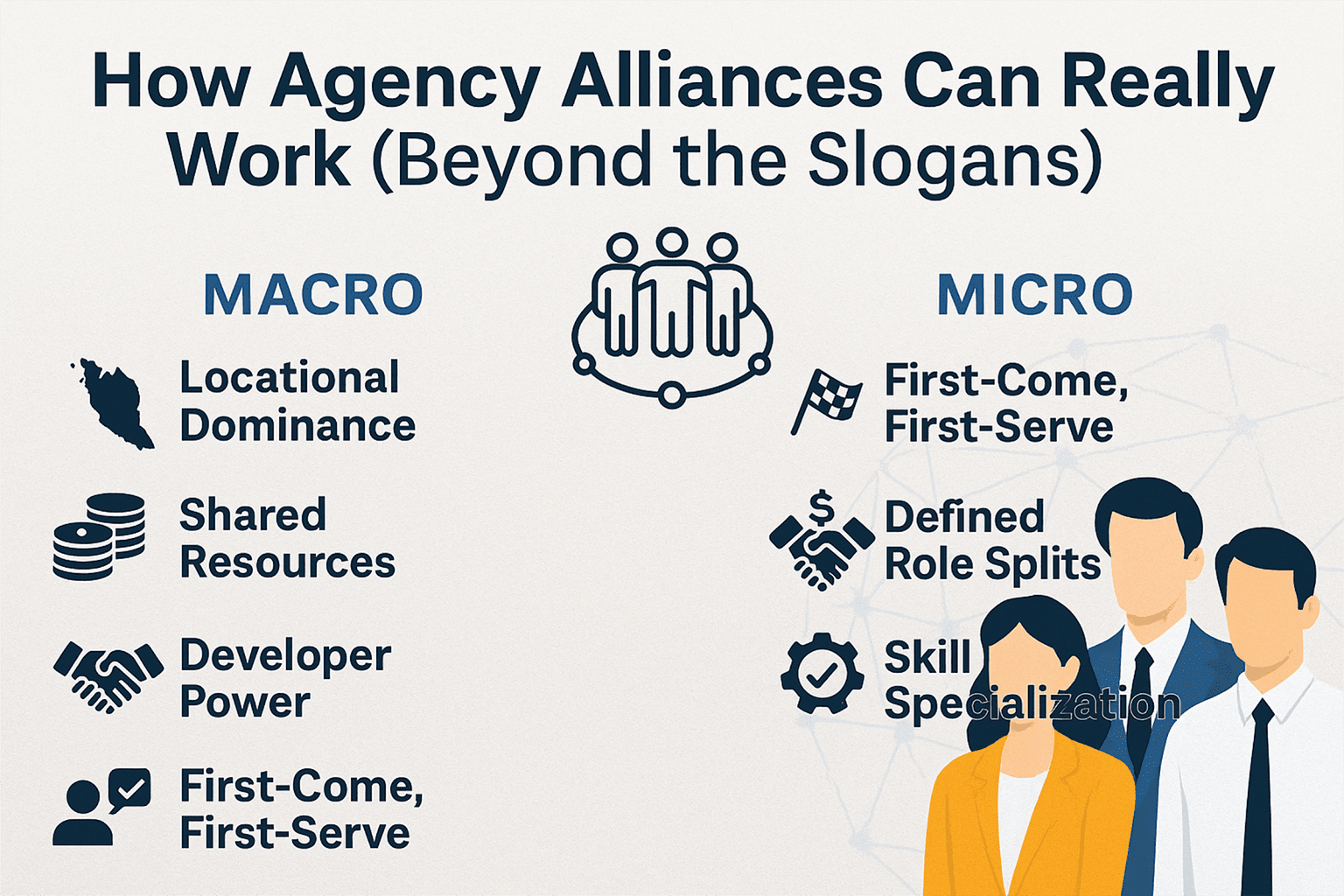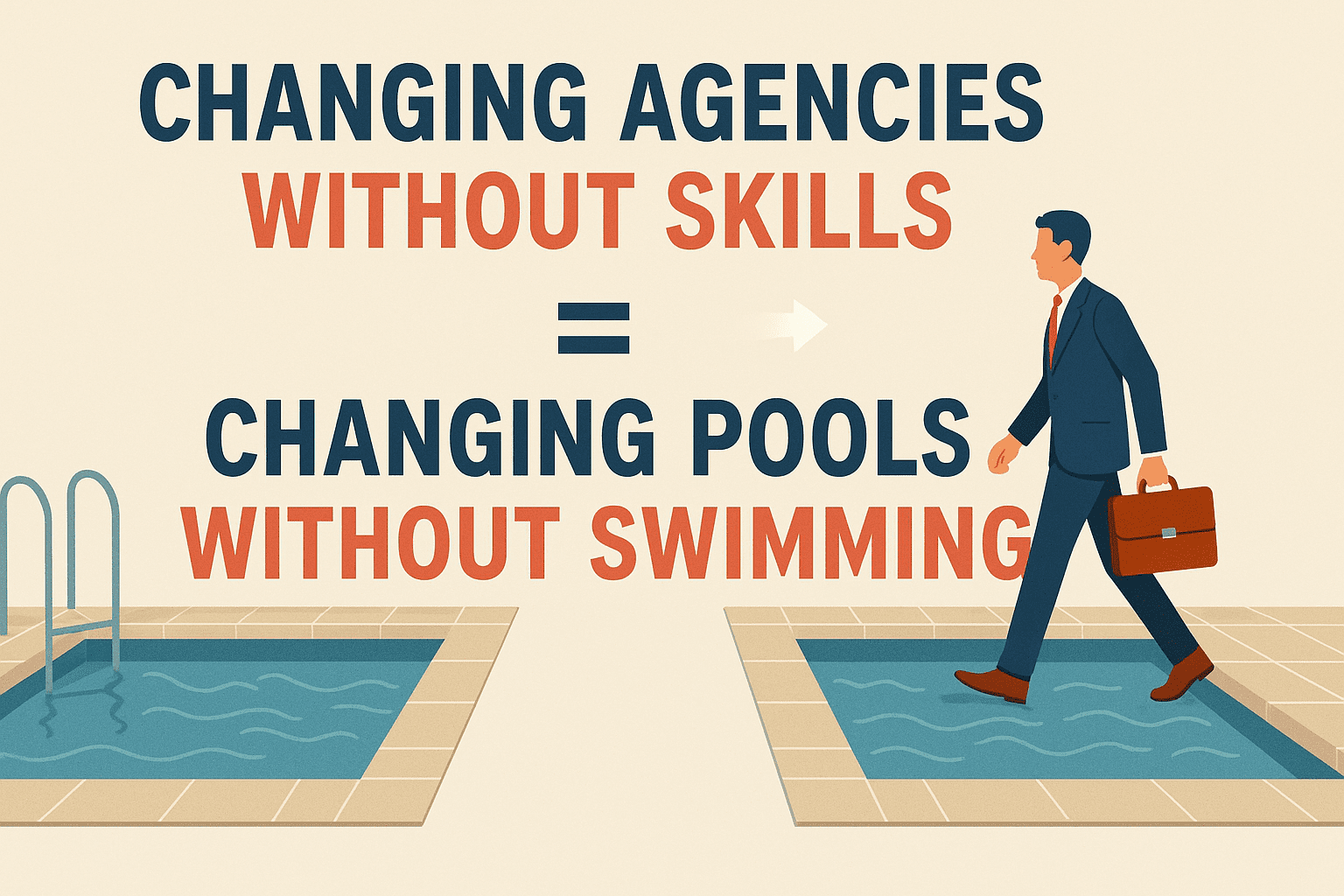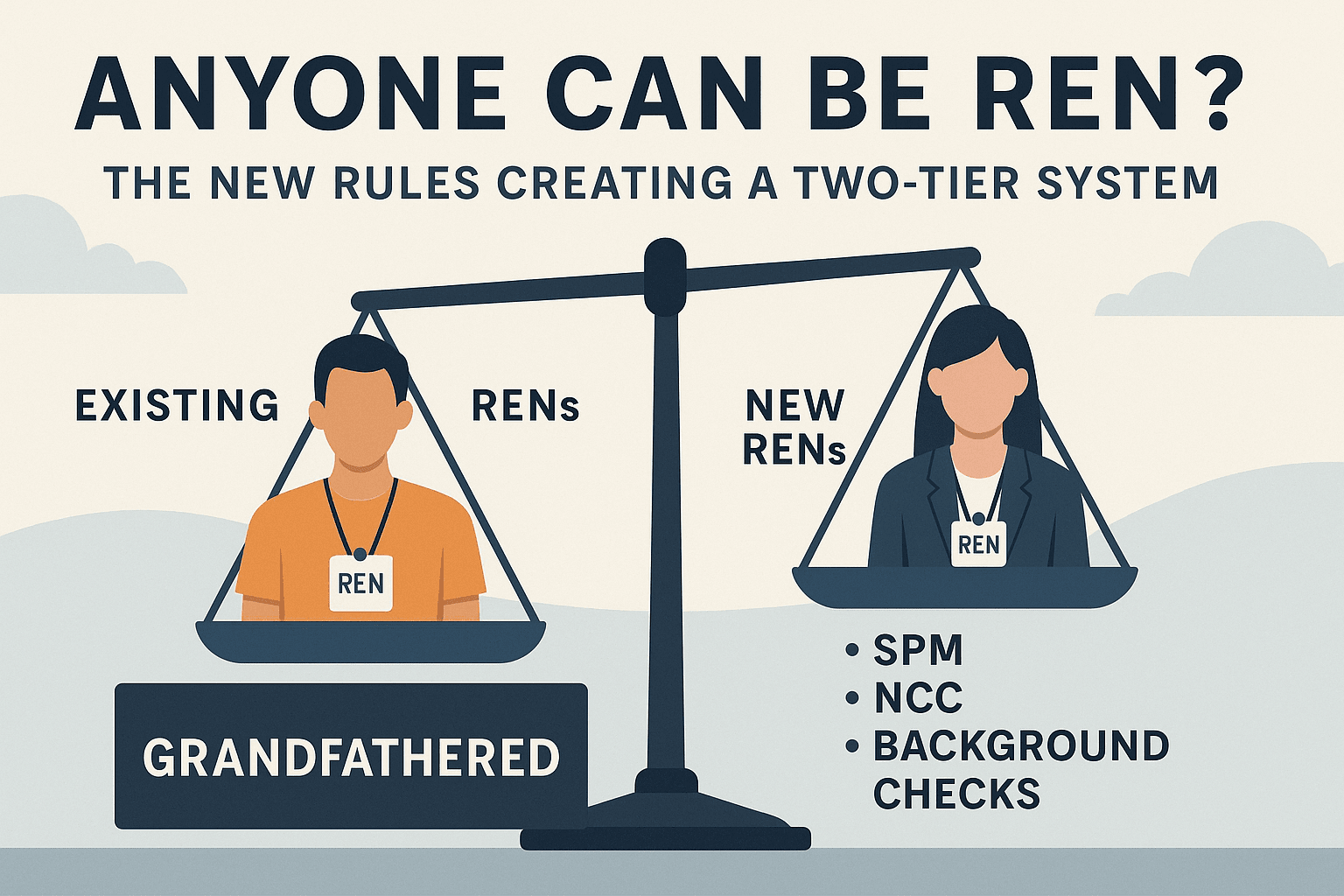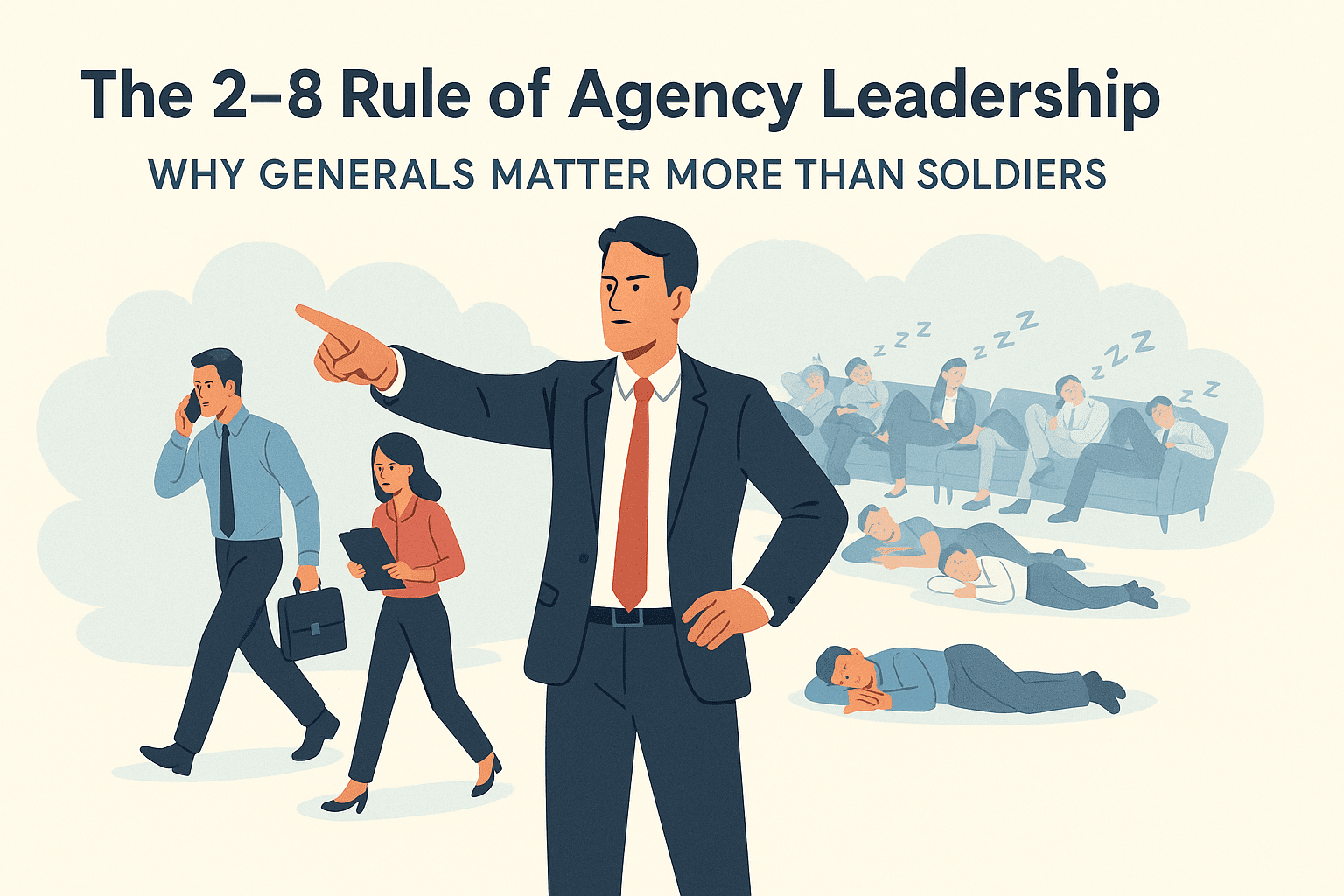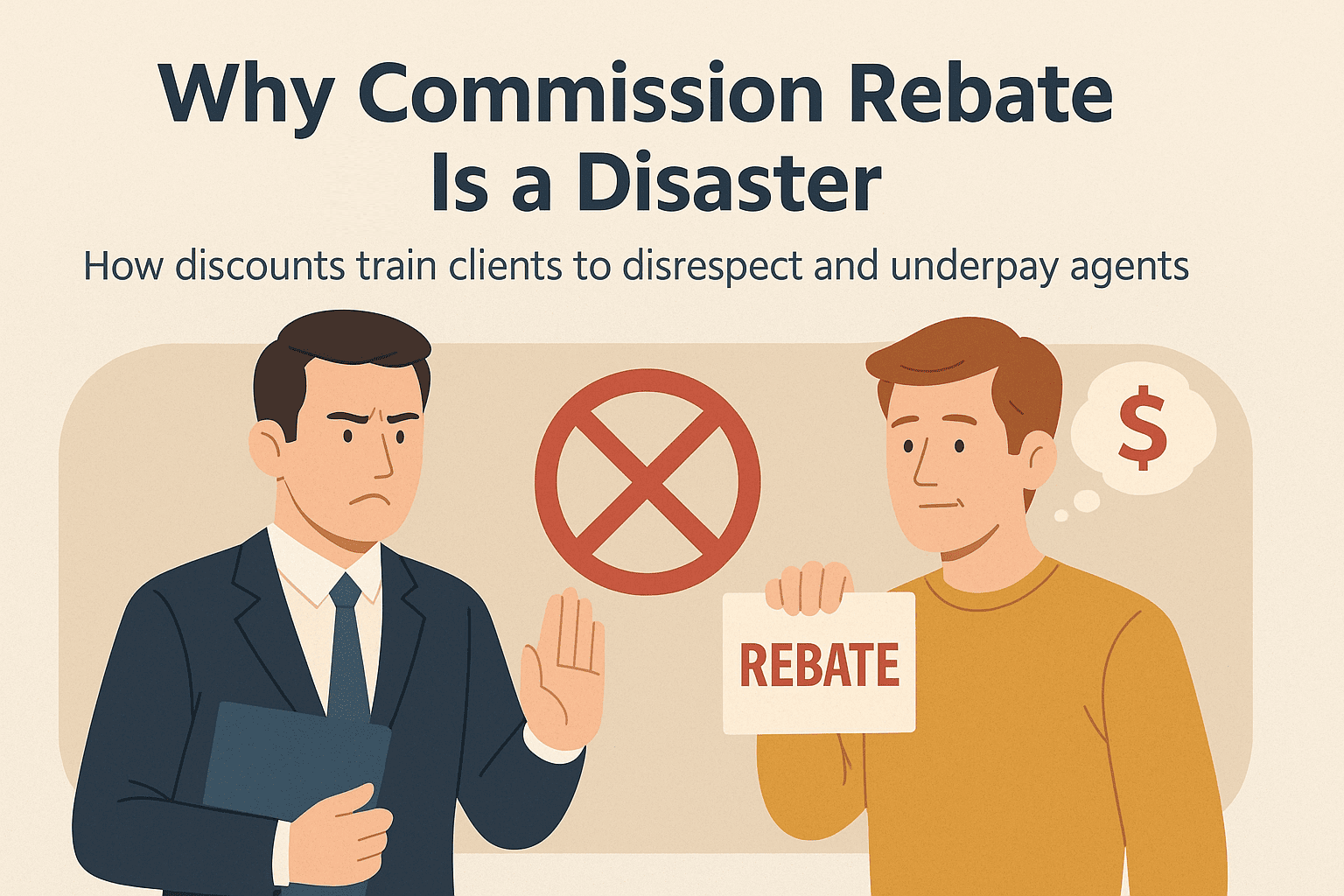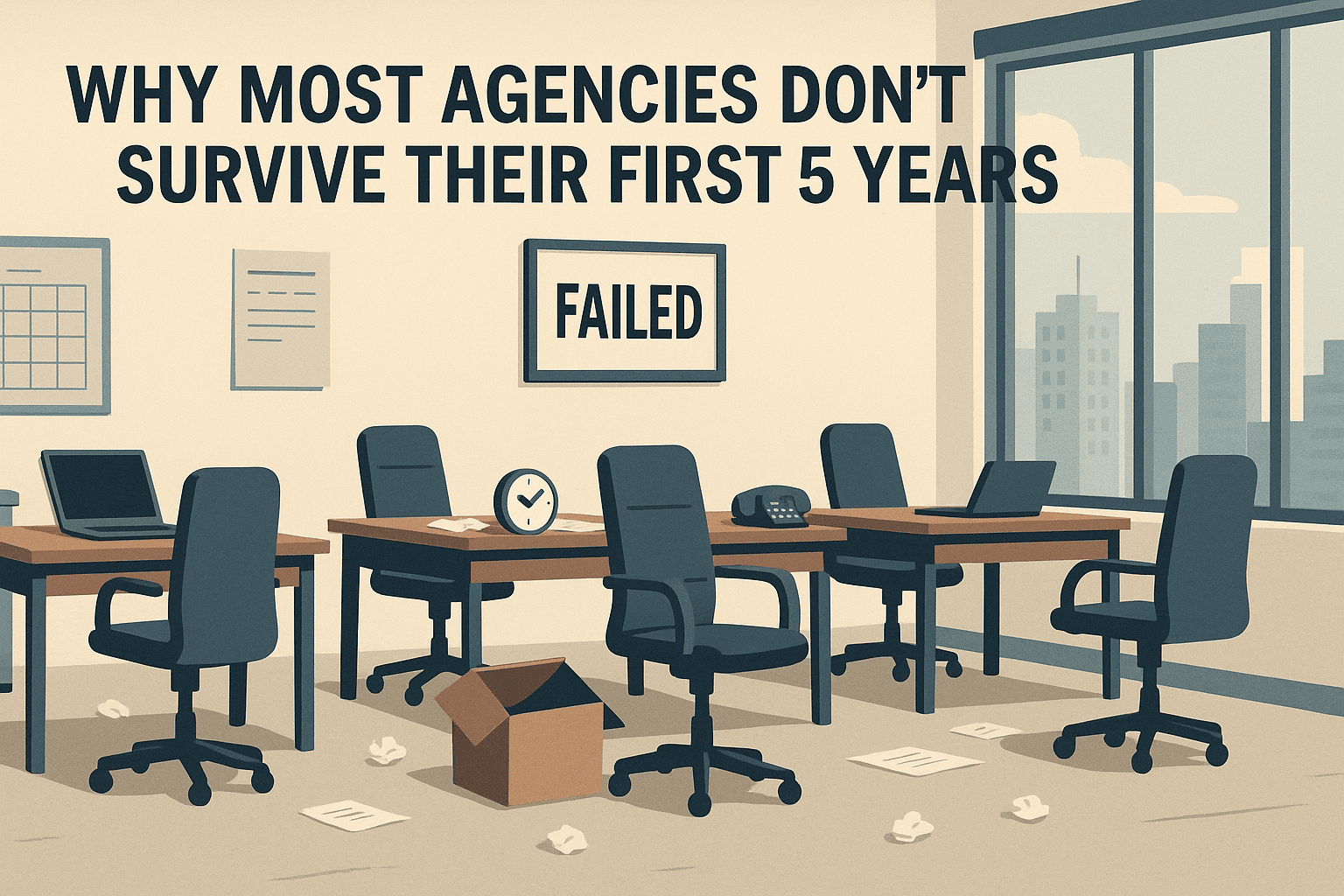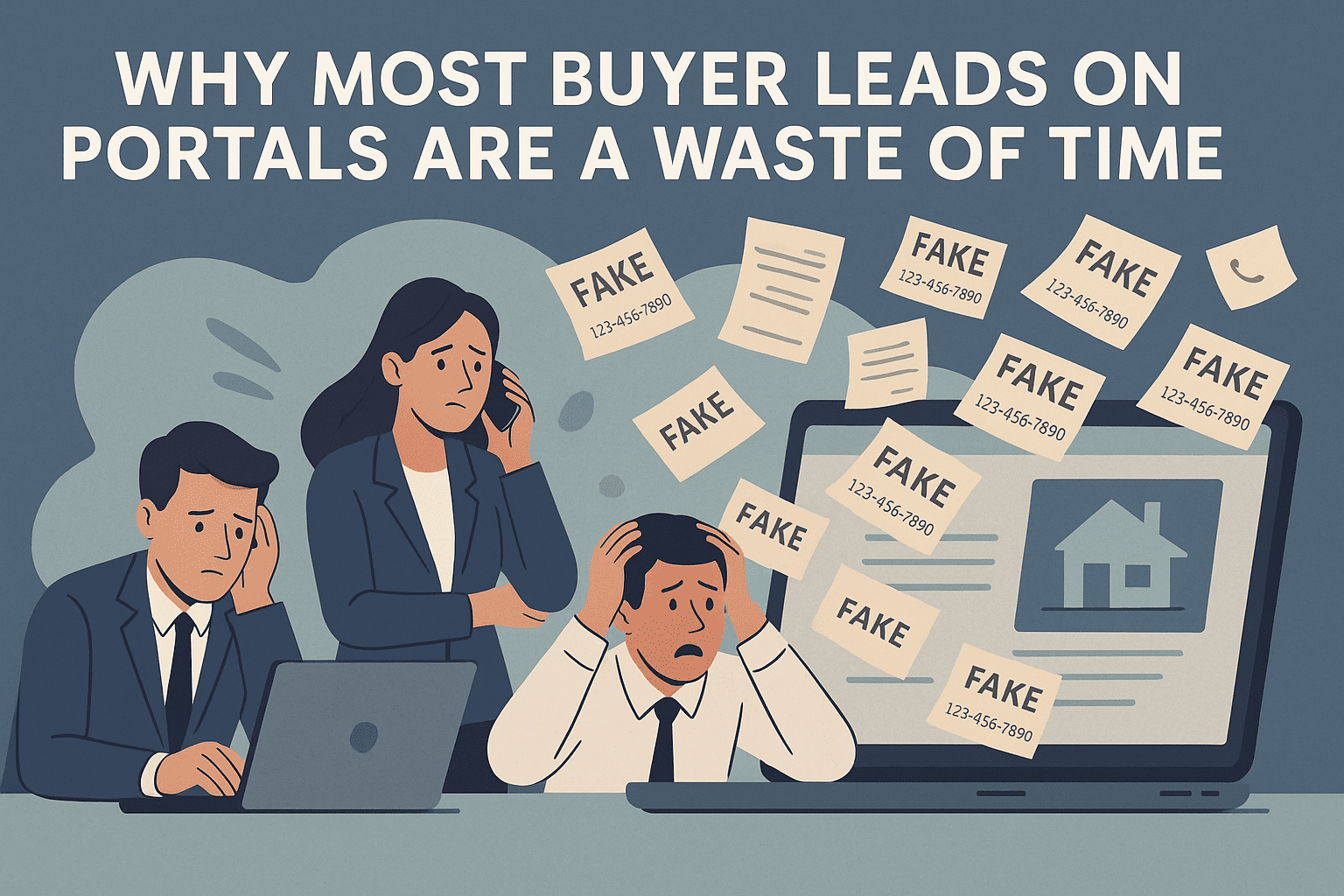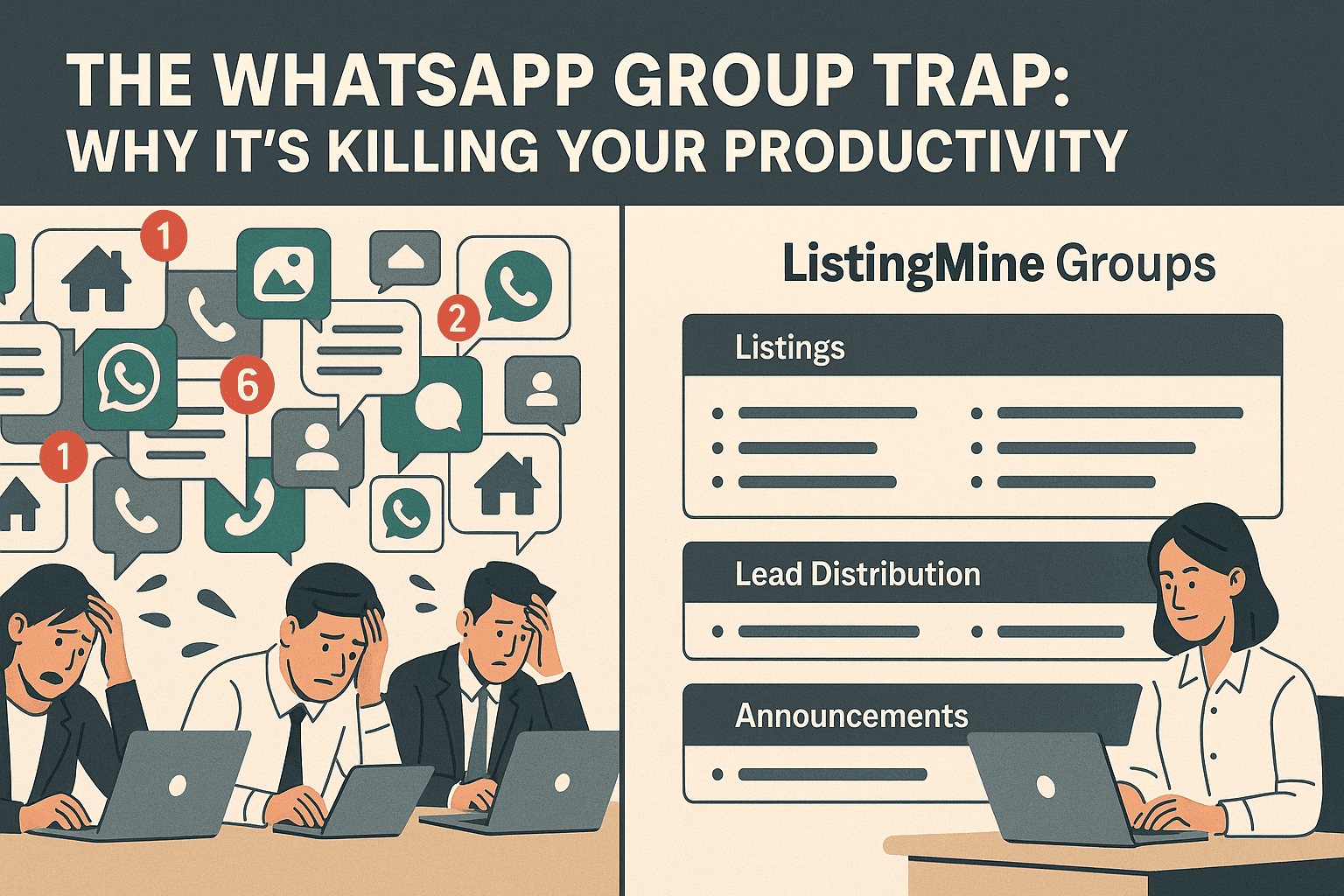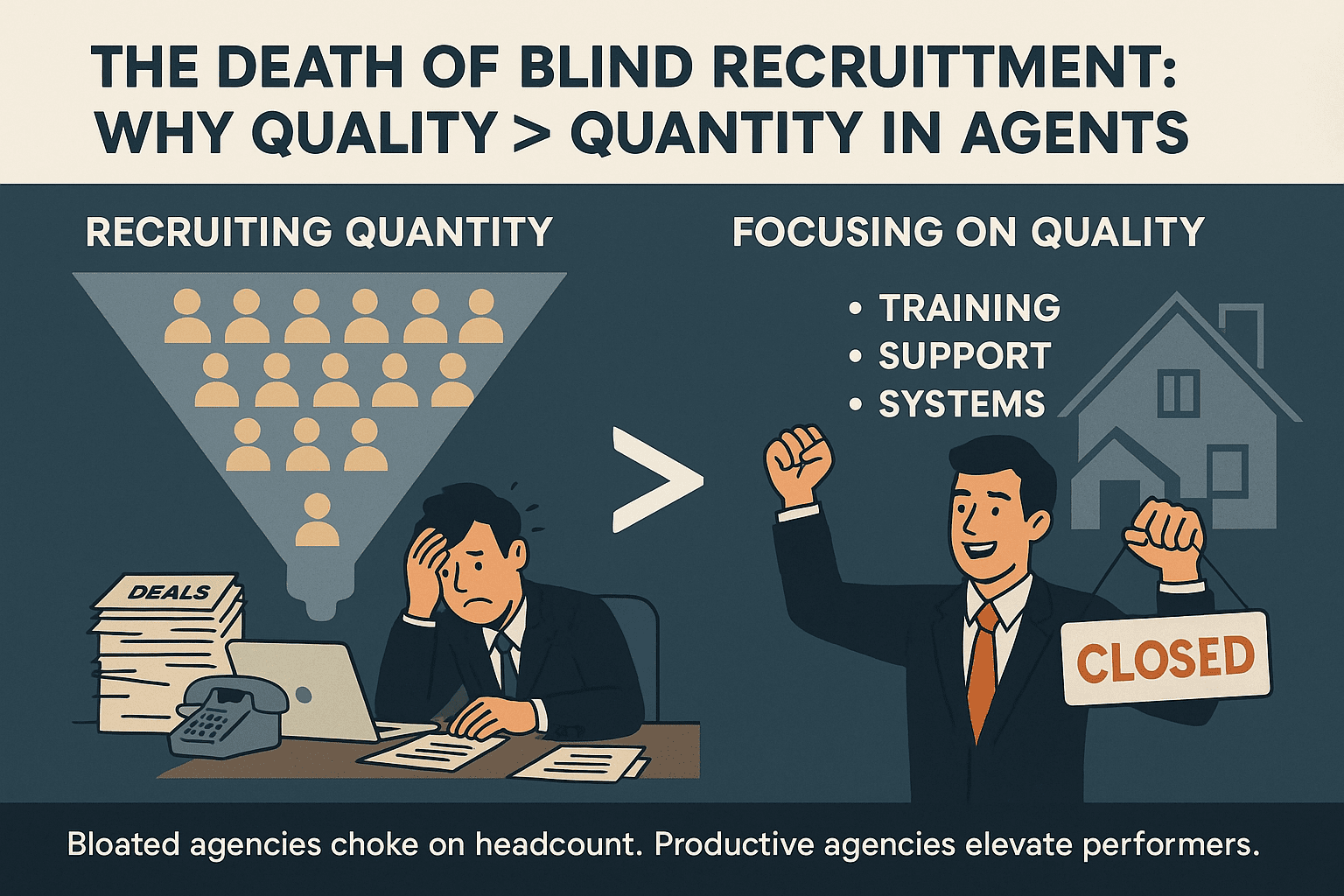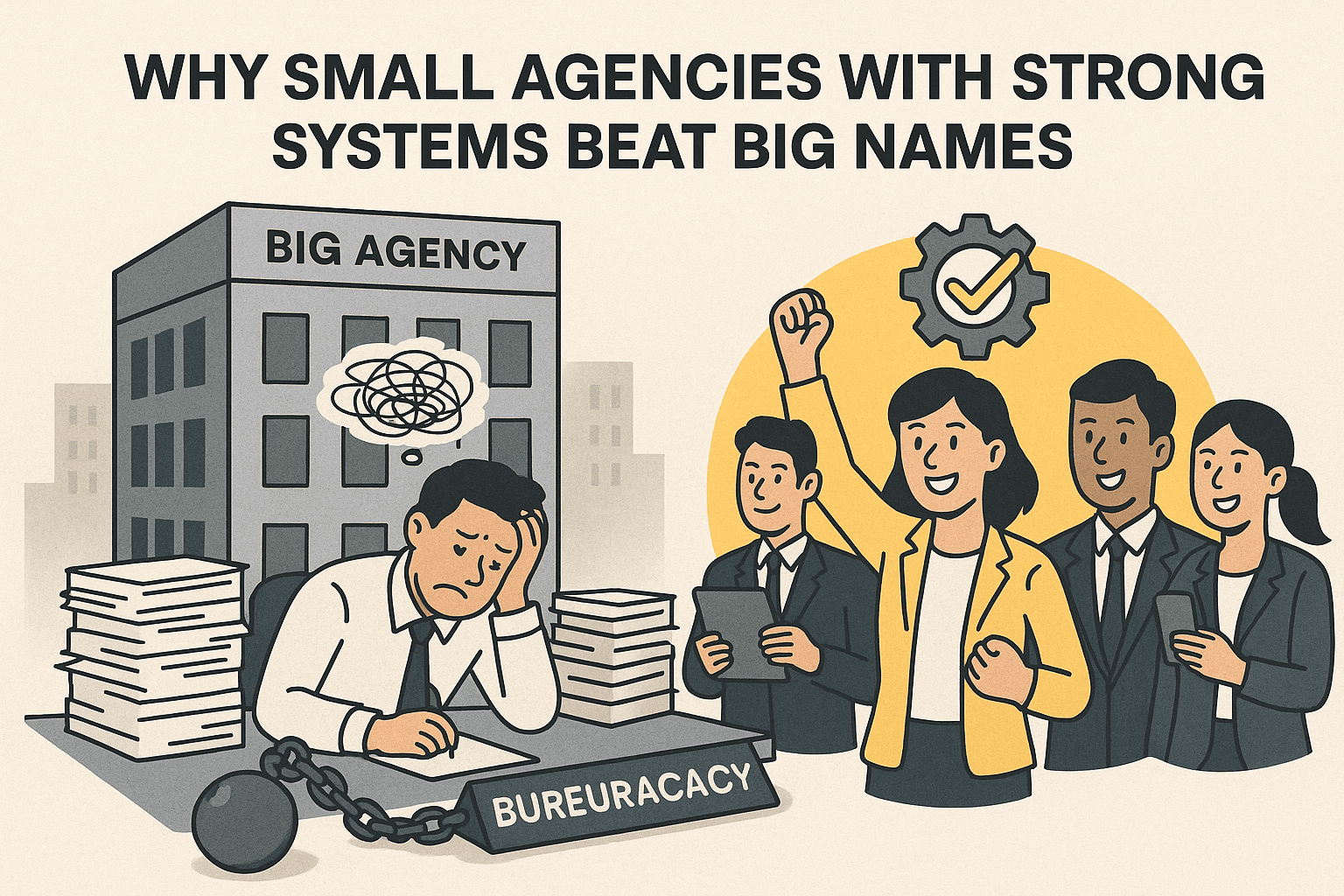The REN Boss Paradox: Why Real Power in Malaysian Real Estate Isn’t Where You Think
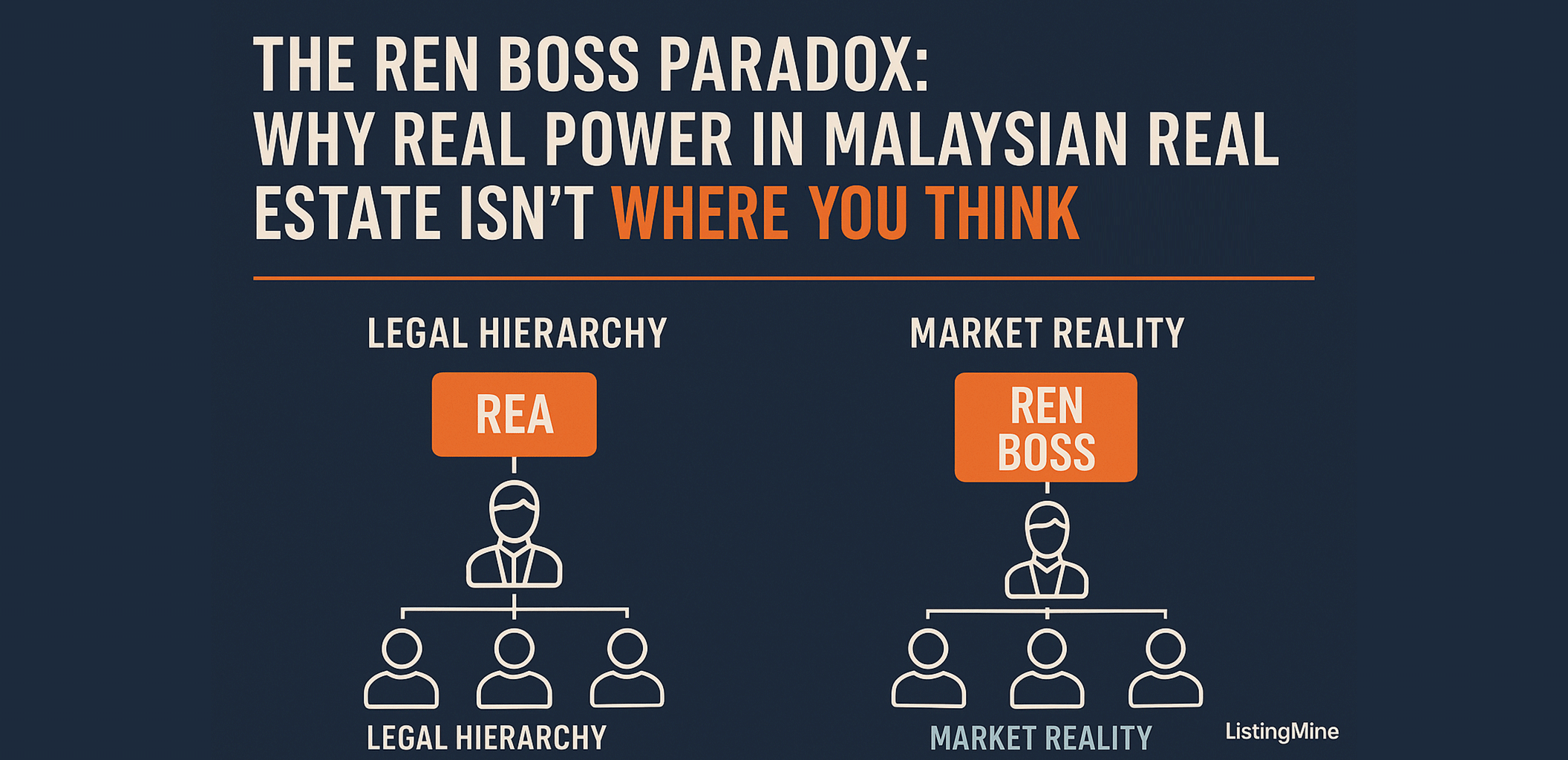
The Legal Story vs. the Market Reality
On paper, Malaysia’s real estate hierarchy looks neat:
- Registered Estate Agents (REAs) hold the licenses.
- Real Estate Negotiators (RENs) work under them.
- By law, one REA may supervise up to 50 RENs — a rule designed to ensure accountability and professionalism.
But the market tells a different story.
Across Malaysia’s largest agencies by REN headcount — the recruitment-driven firms that dominate the subsale and project-marketing segments — it’s the REN bosses, not the REAs, who run daily operations.
In fact, among the country’s top ten firms by total negotiator count, almost all are led day to day by REN bosses — not by the REAs whose names appear on the licenses.
By contrast, the largest agencies by profit — those engaged mainly in corporate, valuation, or institutional real estate — are often still REA-led, with structured departments and formal hierarchies.
This distinction matters. Policymaking tends to reference the REA-led corporate model, while most of Malaysia’s active agency workforce operates within REN-driven organizations.
That gap between legal structure and operational reality is where today’s imbalance begins.
A System Built for the Past
The REA–REN framework was drafted decades ago for small agencies, where one REA could personally mentor a handful of negotiators.
It was never designed for today’s large firms managing hundreds of agents across multiple projects.
As agencies expanded, the model buckled.
No single REA could oversee recruitment, training, marketing, and compliance at scale.
The only way forward was to create a middle layer — team leaders, project heads, and de facto REN bosses — to absorb the operational load.
These roles evolved into the true command structure.
REN bosses built teams, managed developer relations, and drove sales — while many REAs became focused on compliance and administrative oversight.
The legal hierarchy stayed static; the operational hierarchy adapted to survive.
The Official Chain vs. the Real Chain
By regulation, every REA is responsible for the RENs they supervise.
In practice, once an agency grows beyond a few dozen negotiators, that level of control becomes a legal fiction.
An informal but powerful structure takes over, dividing core functions:
| Function | REA (License Holder) | REN Boss / Team Leader |
|---|---|---|
| Legal Authority | Holds license, signs statutory forms | Executes daily operations and sales |
| Compliance | Oversees audits and trust accounts | Ensures team-level compliance and listing accuracy |
| Recruitment | Formally approves new RENs | Sources, trains, and mentors recruits |
| Compensation | Defines firm policy and commission caps | Designs real-world commission and override schemes |
| Operations | Sets broad agency goals | Manages leads, disputes, and agent retention |
| Marketing | Approves overall branding | Runs ads, manages budgets, and drives content |
The REA guards the gate.
The REN boss commands the field.
How the Power Shift Happened
This transition wasn’t rebellion — it was adaptation.
Scale forced delegation. Centralized control is impossible with hundreds of RENs.
Market speed required autonomy. Launches and deals can’t wait for layered sign-offs.
Commission systems rewarded leadership. Those who build productive teams control the income flow.
High turnover demanded structure. Team-based management became essential to maintain continuity amid constant churn.
Over time, the REN boss role evolved from informal to indispensable — the operational engine of the modern agency.
The Policy Blind Spot
The law still recognises only two roles: REA and REN.
But the market now operates with three:
- REA – The legal and compliance anchor.
- REN Boss / Team Leader – The operational and cultural engine.
- REN Negotiator – The frontline performer.
Policies assume REAs directly manage RENs.
In reality, REAs manage REN bosses, who manage REN negotiators.
When regulations ignore this operational reality, they miss the layer where behaviour, incentives, and leadership truly reside.
That’s why enforcement so often fails to translate from paper to practice.
Why Policymakers Must Recognise REN Leadership
If reform is meant to strengthen professionalism, it must start with the people who run the machine.
REN bosses and team leaders:
- Design the commission structures that drive behaviour.
- Set the recruitment standards that shape the industry’s talent pool.
- Control override systems that influence loyalty and retention.
- Balance ambition and compliance at the front lines.
They are the first to see a policy fail — because they are the ones responsible for making it work.
Ignoring them means governing a ghost.
The Evolution Ahead
The rise of the REN boss isn’t a threat to REAs — it’s the next stage of professional evolution.
As agencies scale, leadership must decentralize and accountability must formalize.
Recognising REN bosses — through structured consultation, accreditation, or inclusion in policymaking — would:
- Ground policy in operational reality.
- Strengthen accountability by defining their compliance role.
- Improve adoption rates, as leaders can cascade and enforce rules effectively.
Conclusion
Malaysia’s real estate industry isn’t powered by titles — it’s powered by execution.
The REA holds the license.
But the REN boss runs the business.
If regulation is to reflect how the industry truly operates, it must stop treating REN bosses as senior subordinates — and start recognising them as the operational backbone of Malaysian real estate.

